Don't wanna be here? Send us removal request.
Text
BEST SOIL FOR CACTUS: WHAT TYPE OF SOIL IS BEST FOR CACTUS? | itsaboutgardening.com

Behind every healthy and balanced cactus lies well-conditioned soil. It is of utmost importance to select the very best soil for cactus because it aids the plant expand well, generate a beautiful blossom, maintain its spiny framework, as well as maintain its attractive kinds.
Cactus as a houseplant generally requires soil that very closely resembles its natural environment-- the desert.
Because of that, the following details will certainly be your guide in choosing and also creating the best soil for cactus for them to have a lengthy lifespan:
Best Soil for Cactus: Its Characteristics

Recognizing the best soil features for cactus is important due to the fact that it will certainly serve as your leading guide to select the ideal soil as well as which type you should not use.
Well-draining
The soil ought to be well-draining since it generally grows in a dry setting. This kind of soil aids eliminate the excess water to make sure that it will certainly not lead to root rot.
Pebbly and Sandy
Given that it is a desertic plant, consequently, the most effective soil for cactus need to be pebbly and sandy in a sensible amount. Cactus often tends to grow well in this kind of soil that dries swiftly. Furthermore, pebbles help to boost water drainage that supports the excess water to move easily.
Porous
The soil pores help maintain the nutrients and also retain the ample quantity of water needed by the roots and also the cactus. It is necessary to bear in mind that the best dirt for cactus is likewise a porous one if you desire a heartier plant growth.
The Right pH Levels
The soil reaction's pH indicates the relative level of acidity (sour) or alkalinity (wonderful) of the soil. With that said, the most effective dirt for cactus ought to be in the pH variety of 5 to 6.
For the most part, it may lead to the death of the cactus when the pH of the dirt you used is below 4 and also higher than the pH range of 7 to 7.5.
One pointer for preserving the equilibrium of the dirt pH is to use rainwater. On the other hand, you can use a business test probe or pH examination strips to analyze your soil mix if it has the correct pH.

Organic and Inorganic Ingredients
The adhering to are some natural and also not natural active ingredients in nature that will certainly aid you produce the very best dirt for cactus.
1. Organic Media

Coco Coir and also Composted Rice Husks
These are referred to as the highly recommended as well as finest organic media to be consisted of in your cactus dirt mix.
Other than the reality that they give framework and helps to keep the wetness in the soil mix, coco coir and also composted rice husks are rot-resistant, and most significantly, they can attach the nutrients required by the plant.
Peat Moss
It is taken into consideration one of the premier active ingredients of a cactus potting mix. Its relevance to the dirt's porosity is understood for its importance, in which it decreases the soil's pH degree.
Please note that the soil only needs a pinch of peat moss due to the fact that it has outstanding water retention.
So when you made use of a large quantity of this in your dirt, it can keep a lot more water than a cactus needs, which might cause overwatering and also eventually origin rot.
2. Inorganic Media

Sand
The very best soil for cactus requires to be sandy. That is why one of the ingredients is rugged sand; it is commonly made use of in a cactus potting mix to see to it that the dirt is ventilated and dries well.
A famous instance of coarse sand suitable for cactus is the cleaned sand utilized to make cement.
Perlite
This active ingredient gets on the leading list of referrals due to its exceptional oxygenation ability; it aids keep the potting mix's dampness as well as avoid soil compression.
Pumice
Usually talking, a cactus potting mix usually brings about 25% to 30% of pumice. This ingredient is best known for its porous quality and can withhold sufficient wetness because it provides more space for the air to pass through.
It helps the water run efficiently via the dirt, as well as this volcanic rock contains micronutrients that are beneficial to the plant.
Vermiculite
Vermiculite is proficient at freshening dirt, maintaining adequate water, and removing the excess one. It can be integrated with peat moss when you intend to lighten your dirt to expand the plant's origins better.
In addition, it is made use of for healthier plant development due to the fact that it allows the plants to absorb potassium, calcium, ammonium, as well as magnesium.
Gravel, Grit, and Crushed Granite/ Limestone
These inorganic components are typically made use of in a cactus potting mix to make sure that the soil is well-draining as well as can absorb nutrients.
Extra so, these make the best soil for cacti a loosened as well as ventilated one.
What if you want to use a commercial soil mix?
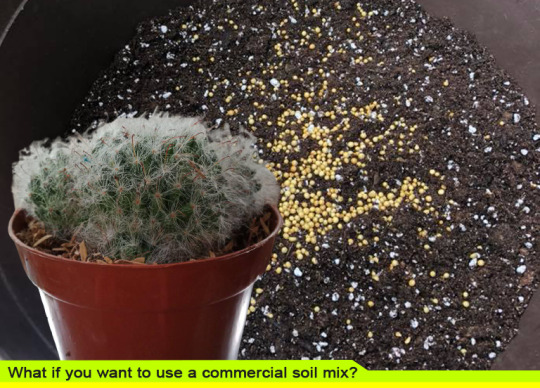
If you do not have sufficient time to produce a cactus potting mix, another choice is to acquire commercial cactus potting dirt, but it is essential to make certain that it is the best soil for your cacti.
Constantly keep in mind the adhering to when choosing an industrial potting dirt for your cactus:
Please note that advertised potting dirt is not that sufficient for your interior cactus plant. A remedy for this is to integrate it with pumice or various other organic/ not natural media to achieve the dirt's ideal porosity and also boost its mineral content.
Pick the cactus potting mix that is a well-draining one and also has superb water-storing top quality to maintain the dirt's moisture.
Reminder in making your cactus soil mix
It would certainly be a whole lot more affordable when you make your cactus potting mix, however it does require effort and also time. There is no solitary recipe for a cactus potting mix, the one needed by a desert cactus varies from what dirt mix is called for by a jungle cactus.
You must prevent making use of manure in your dirt mix since it tends to create a fungus that can hurt the cactus's roots.
For plants, water has the very same significance as soil. Choosing the best soil for cactus aids the plant to thrive finest. That is why the pointers pointed out above will be advantageous for you as a plant lover.
Always make certain to pick the dirt potting mix suitable for your cactus for a heartier development abundant in nutrients, well-draining, permeable, pebbly, sandy, with the right pH degree, as well as makes use of organic or inorganic media.
0 notes
Text
CRASSULA CAMPFIRE SUCCULENT CARE GUIDE | itsaboutgardening.com

Crassula Campfire is an eye-catching, branched-sprawling succulent with densely compact propeller-shaped leaves. It has fleshy vegetation that can turn from light eco-friendly to bright red when exposed to bright light as well as chilly temperature levels.
This succulent matures to 6 inches (15cm) in elevation and also spreads 3 feet (90cm) broad. It is a low-growing plant that creates a colorful floor covering, and you can utilize it as a small-scale groundcover.
Crassula Campfire begins to grow in summer season with a stalk of white, star-like flowers in clusters as well as some crassula variety.

Crassula Campfire Care Guide
Caring for Crassula Campfire can be easy, as well as it calls for couple of important points to expand healthy and balanced. If you give them conditions comparable to their natural environments, they will expand fast and also show their ideal appearance.
The complying with are the necessary care guides you should recognize in growing Crassula Campfire. These overviews will help you grow your Crassula Campfire from the beginning.
Watering Procedure

If you are a succulent farmer for a long time, you should recognize that succulents need less watering than other houseplants. Hence, Crassula Campfire need less watering.
Crassula Campfire has fleshy fallen leaves that work as the plant's water storage. Therefore, they can endure brief periods of drought. Nonetheless, they can likewise pass away of thirst, especially during the summer season or in areas with warmer climates.
When sprinkling your Crassula Campfire, constantly make certain that the soil is arid before watering once again. You can check the soil's moisture by sticking your finger on the leading inch of the dirt mix. If you are doubting, you can make use of a wetness meter to make certain that the soil or ground is not damp.
The watering process is additionally relying on the period and also environment where you live. In locations with warmer temperature levels as well as throughout the summer season, Crassula Campfire needs frequent watering and much less during the winter and also in places with chillier temperature levels.
Water your Crassula Campfire completely. If grown in containers, let the water goes through the water drainage openings. Make certain to remove the excess water from the drainage plate.
Some garden enthusiasts make use of the bottom watering procedure. It is the procedure by which you put water into the drainage plate or in a container with two inches high of water and also allow the soil to absorb the water for 10-15 mins.
It is an easy way to hydrate your plants without worrying about overwatering that can trigger your plant to root rot.
Overwatered plants also bring in insects and pests that can eliminate your plant. So prevent overwatering your Crassula Campfire to avoid them from passing away.
Soil Requirement
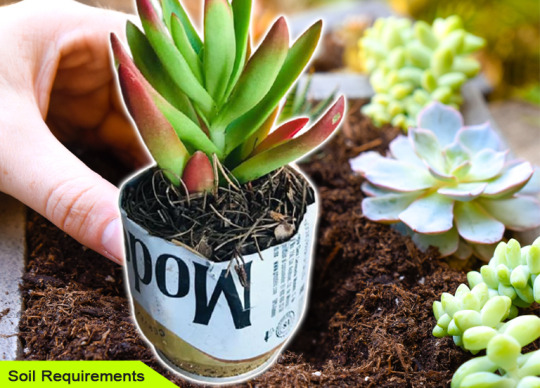
As was claimed above, overwatering can eliminate your succulents. However, the watering procedure in some way depends on the type of dirt you made use of in expanding your succulents.
Succulents' natural environment is arid, drought-prone locations, like deserts. If you want to grow one, like Crassula Campfire, you ought to recreate an atmosphere that simulates their natural habitat. A sandy or rough, airy, well-draining soil is perfect.
Either expanding inside or outdoors, succulents require a special potting mix different from the regular potting mix you used in various other houseplants.
You can make use of a store-bought cactus mix, or you can make one. Integrate one part of normal potting dirt as well as two parts of either perlite, pumice, or rugged sand. The objective of this blend is to give good water drainage. This combination doesn't hold way too much wetness that causes waterlogging and also root rot.
Lighting Conditions
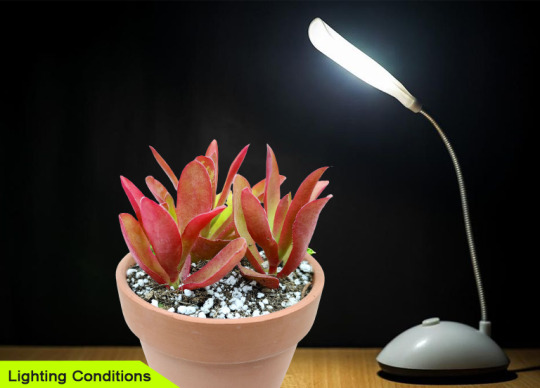
Crassula Campfire has one unique feature, as well as it is its vibrant red shade. Its significant and also impressive color modifications gradually from pale green to brilliant yellow-orange and also eventually bright red if given sufficient bright light. They need to be kept in bright light to attain as well as retain their dazzling color.
Crassula Campfire expands ideal in bright direct light with a little bit of color if grown outdoors. They require at the very least 4 to 6 hrs of sun exposure to expand healthy as well as perfectly.
If grown indoors, area your Crassula Campfire where it obtains bright light. It is best to put it near your windows or on the window sill to supply appropriate sunshine. If you intend to maintain them inside your home but don't belong that gets enough natural light, you can use grow light to offer added light as well as keep them warm.
If suddenly you believed to bring your indoor succulent outdoors, do not overexposed it as soon as possible. Rather, change the illumination problem gradually to avoid distress to your succulent. For example, you can practice a day-to-day progressive boost in sun direct exposure till your succulent adapts to its brand-new atmosphere or climate.
While Crassula Campfire grows happy in bright straight light, outdoor sunlight can also be harsh, especially throughout the summer season and also afternoon sunlight. Direct exposure to extreme sunshine can burn the leaves of your Crassula Campfire. If this happens, move your plant into a dubious location.
Pots

As mentioned above, Crassula Campfire is a low-growing succulent and also often as groundcovers. If you wish to expand this succulent in a container, choose a more comprehensive pot to give room to spread out. It is additionally crucial that the container you are making use of has appropriate drainage.
A succulent planted in a container without proper drainage will definitely pass away.
Temperature

Crassula Campfire is a soft and also tender succulent since it can not deal with frost. It likes locations with a warm atmosphere. If you stay in a chilly climate, it is best to plant your Campfire in a container to bring it inside when the temperature level obtains reduced.
Crassula Campfire can survive at temperature levels not below 30 ° F (-1.1 ° C).<br>
Toxicity

Crassula Campfire can be hazardous to humans and also animals when consumed.
Fertilizer

Feed your Crassula Campfire with a controlled-release plant food at the beginning of the expanding season. Do not feed your Campfire during winter months.
Pruning

Crassula Campfire doesn't require pruning. However, if somehow your succulent becomes etiolated, reduced the leggy stem as well as use it in propagation.
Propagating Crassula Campfire

A lot of succulent enthusiasts enjoy having Crassula Campfire in their garden because of its appealing vivid shade. Additionally, they increase their collection of succulents by circulating.
You can circulate the Crassula Campfire through division, cuttings, as well as offsets. Though it might take some time, you can likewise circulate Crassula Campfire via seeds. You can plant the seeds from the dried out flowers and maintain them in a warm and partial shade.
Through Division
The best time to propagate Crassula Campfire through division is throughout the expanding period, typically in spring.
Remove very carefully the mommy plant using a shovel, then divide it carefully. Finally, plant them back individually right into their brand-new specific pots. Keep in mind to circulate your succulents when the soil is dry.
Through Cuttings
Stem cutting is the easiest method to circulate Crassula Campfire. Select a rosy stem and also cut it with a clean knife or trimming shears. Remove the excess leaves from the base of the stem. Allow to dry the wounds or to be calloused for a couple of days without subjecting it to sunlight. Some garden enthusiasts make use of rooting hormone to make the treatment quicker.
When the cut end is completely dry, it is ready to plant the stem right into the soil. Water lightly after a couple of days or a week to avoid decaying.
You can likewise circulate Crassula Campfire by fallen leave cuttings. Cut healthy fallen leaves from the mommy plant, lay them in a tray or a shallow container with cactus soil mix, and location it in a warm, shaded area.
It will certainly create brand-new origins after a couple of days as well as a special rosette after numerous weeks. You can transplant these child succulents when they reach half an inch tall and when the mommy fallen leave dries. You can use a spray container to mist the baby plants and avoid full watering until it develops.
Through Offsets
Offsets are the pups or babies that you can discovered at the base of the mom plant. You can make use of offsets to propagate and also expand a new succulent.
Utilizing a clean and sterile blade or cutter, cut easily a balanced out from the mother plant. Enable to callous the cut part for a few days prior to growing right into the brand-new soil. Do not water the new plant immediately and also position it in an intense, shaded location or partial filtering system sunlight.
Crassula Capitella Campfire Pests and Problems

Regrettably, like other succulents, Crassula Campfire is vulnerable to parasites as well as bugs such as mealybugs and also aphids. These insects can damage your plant in a snap otherwise treated promptly.
You should regularly scrutinize your succulents every single time you sprinkle them. Both mealybugs and aphids are little that you nearly can't see. They generally conceal under the fallen leaves or in the crevices of the plants. In the Campfire situation, they like concealing in those compact leaves.
Mealybugs are little, white, soft-bodied bugs and also appear with small, white, cottony, weblike compound.
Aphids are small sap-sucking insects in the superfamily Aphodoidea. You can usually see these pests feeding in clusters on new plant growth.
If you suspect the visibility of these pests, the first thing to do is maintain them far from the other plants. Next, clean off your delicious with a solid jet of water while scuffing those visible insects. Allow the plant dry, then spray it with 70% isopropyl alcohol as well as rinse it with water. You can additionally stream your plant making use of neem oil. It is a natural pesticide from the extract of a neem tree.
An additional typical parasite is the creeping plant weevil. It is pretty very easy to identify if your delicious is plagued with creeping plant weevils. There will be notches of chewed plants and also white or brown eggs in the dirt around the base of plants.
Vine weevil is a dark insect, around 1cm long, with jointed antennae as well as pale-brown dots on its backs.
Soaking your succulent soil with vine weevil killer is one of the most efficient means to treat your contaminated plant.
One of the most typical problem in growing succulents is overwatering. It can be fatal to your succulent. If you discover that the leaves are starting to become soft, mushy, as well as brown, it means that your delicious is struggling with overwatering. If this takes place, examine the roots quickly how much damages your succulent is dealing. Initially, reduced the roots or behead your delicious if the roots are starting to rot. Then, allow it dry for a few days as well as plant it right into the new soil.
#CRASSULA CAMPFIRE SUCCULENT CARE GUIDE#Watering Procedure#Soil Requirement#Lighting Conditions#Pots#Temperature#Toxicity#Fertilizer#Pruning#Propagation#Pest and Problems
1 note
·
View note
Text
WATERING GUIDE FOR BLUE ROSE ECHEVERIA | itsaboutgardening.com

Watering Guide for Blue Rose Echeveria - The Blue Rose Echeveria, additionally called the Echeveria Imbricata, is an exceptional turquoise delicious frequently expanded outdoor or indoor plant.
This beautiful succulent is non-toxic to humans as well as animals, which makes it a friendly plant. As you may already understand, succulents like heaven Rose Echeveria require very little care for it to prosper, especially throughout their inactivity duration.
Though it is a low-maintenance residence plant, it is still required to appropriately look after this succulent.
Incorrect treatment might harm the succulent or can even result in the death of the plant. The good idea about Blue Rose Echeveria is that it is dry spell tolerant, suggesting it can love just minimal watering as well as adequate sun direct exposure.

This short article will supply the important watering guide you require to understand when expanding a Blue Rose Echeveria
Quick Facts About Blue Rose Echeveria
This succulent can mature to 8 inches (20 cm) in height and 6 inches (15 centimeters) wide.
It needs partial color.
It can endure a zone of 9a (Minimum 200 F -6.70 C).
Blue Rose Echeveria is under the soft alternative succulent.
This succulent is winter season inactive.
How to Water Blue Rose Echeveria?

Blue Rose Echeveria needs normal succulent watering. It does not require way too much water in its dirt because this succulent does not want to being in damp soil. The most effective approach to water heaven Rose Echeveria is the "soak and also completely dry approach."
You could have come across this method prior to since many succulent fans are using this strategy. The "soak and also dry approach" strategy is watering, in which you let the soil completely dries before watering again. Succulents are prone to root rot. That is why they hate to be overwatered.
In watering the Blue Rose Echeveria, go for its soil as well as not the plant itself. Because in addition to origin rot, fallen leave rot can also occur when the foliage of the succulent remain on water for a long time and also can no more absorb water.
The frequency of watering Blue Rose Echeveria in different seasons

The sprinkling timetable of heaven Rose Echeveria will differ from period to period. Because each period offers a various ambience and also watering needs for your Blue Rose Echeveria It might be tricky and difficult to readjust from your watering routine, but it is still needed to do so.
Spring - Throughout the spring season, the number of sunshine boosts, and the succulent can have more sunlight exposure. Therefore, sprinkling the delicious as soon as each week will do.
Winter - In winter, you can water the succulent as soon as a month. Nonetheless, because the environment will be more than likely be chilly, drying the dirt will take some time. So, it would certainly be best if you prevented frequent watering.
Fall/Autumn - Heaven Rose has the exact same watering timetable during fall/autumn and also wintertime. But it will certainly still rely on how well the pot and soil used drains water. If, for instance, you use a well-draining pot as well as soil, sprinkling the succulent when a month is fine. But, if you will make use of less permeable soil, you need to water the Blue Rose Echeveria once every two months during those periods.
Summer - Summertime period is most likely the most effective period for the Blue Rose Echeveria Because throughout this moment, the succulent can obtain enough sun exposure, and the climate assists the soil rapidly dries out. During the summer period, you can sprinkle the succulent as soon as every 5-7 days and readjust as needed.
What to consider in watering the Blue Rose Echeveria?

There are vital variables that you require to take into consideration when sprinkling the succulent. These factors will dramatically impact the plant when disregarded.
1. Size of the succulent - Considering the plant's dimension is a factor that is indeed crucial. If the succulent has a little dimension, you need to supply less frequent watering.
2. Growing the succulent indoor or outdoors - Heaven Rose Echeveria can be expanded inside your home as well as outdoors, but there is a large difference in the two's sprinkling routines. Interior succulent requirements to sprinkling much less often (once every 2 weeks is okay), and outside succulent requirements frequent watering (as soon as a week will do).
3. Humidity and temperature of the place - Blue Rose Echeveria dislikes to being in water, so during winter or high moisture where the soil preserves moisture for a long time, much less regularity of watering have to be applied to avoid hurting your succulent.
How much water does Blue Rose Echeveria need?
The Blue Rose Echeveria only requires normal succulent watering. Nevertheless, it is necessary to note that excessive watering will certainly harm your plant as well as not watering the plant at all.
How long can a Blue Rose Echeveria go without water?
Like a lot of succulents, heaven Rose Echeveria can thrive for months, also without water. Nevertheless, this occasion may result in old and wrinkly and also inappropriate leaves appearance.
What type of water is best for Blue Rose Echeveria?
In choosing the appropriate water to use for your Blue Rose Echeveria, you can consider using rain. Rain consists of just sufficient minerals that the succulent demands. It also gets rid of the intact bacteria to the succulent fallen leaves, offering the leaves a fresh look.
Can ice cubes be used in watering Blue Rose Echeveria?
Utilizing ice in sprinkling heaven Rose Echeveria is unadvisable. Nonetheless, succulents like heaven Rose Echeveria are sensitive to the extreme adjustment in temperature. Therefore, using ice will trigger shock to the succulent's origins as well as could even trigger rot.
Is cold water good or bad for Blue Rose Echeveria?
Using cold water in sprinkling this succulent is not advisable. However, it is still better to utilize warm water instead of cold water.
Some common mistakes that affect the Blue Rose Echeveria

1. Putting together the succulents that have different watering needs - Yes, you review it right. Even though it is lovely to see succulents organized in a great pot, placing them together will likewise risk their chance to live. So, remember that when you want to handle our succulents in one pot, place them together with the succulents with commonness.
2. Using soil and pot that is not well-draining - As a gardener, it is vital to note this usual blunder. Making use of soil and pot that does not provide enough water drainage to the succulent is unsafe to the plant.
3. Overcrowding the succulents in one pot - In arranging the succulents, you ought to offer rooms among each delicious to guarantee that there is still enough room for the origins to broaden for the delicious grow also.
4. Watering the leaves of the succulent - Some could think that watering the succulent leaves is a terrific idea to make sure that the fallen leaves have sufficient water. But, doing so will just harm the fallen leaves. The origins can move nutrients as well as water to the succulent fallen leaves and stems.
5. Watering the succulent in the afternoon or evening - Unlike the majority of plants which can rapidly absorb water also during the night, succulents can not. Consequently, it is best to sprinkle the Blue Rose Echeveria in the mid-day to provide sufficient time for the roots and soil to absorb the water and stay clear of water retention.
Problems that Blue Rose Echeveria might encounter and how to resolve them

Below are some of the most typical issues that heaven Rose Echeveria may encounter as well as just how to repair them.
Root rot and translucent or mushy leaves are the most usual troubles that heaven Rose Echeveria encounters. Origin rot and fragile or mushy fallen leaves are triggered mostly by overwatering. If ever your succulent knowledgeable this kind of problem, you can eliminate the afflicted location. Doing this technique will certainly conserve your Blue Rose Echeveria.
Wrinkled and dry foliage - These issues are brought on by underwatering. Although the Blue Rose Echeveria does not call for frequent watering, underwatering the succulent is still harmful for the plant. To settle this issue, rapidly get rid of the affected leaves completely, leaving no traces of the fallen leaves behind. Know and recognize the appropriate watering routine of the succulent and follow it.
What garden and watering tools to use?

The watering guide for Blue Rose Echeveria can use a water bottle or anything with the same attributes as a canteen. Why canteen? Water bottle aids prevent moistening the leaves of the delicious and only concentrates on sprinkling the dirt as well as roots of the plant.
Heaven Rose Echeveria is a superb addition to your succulent collection. If you have inquiries pertaining to the watering guide for Blue Rose Echeveria, this post will undoubtedly give you enough information you needed. Always keep in mind that whatever needs proper caring.
#WATERING GUIDE FOR BLUE ROSE ECHEVERIA#How to Water Blue Rose Echeveria#Watering Blue Rose in different seasons#What to Consider in watering#Some common mistake for Blue Rose#Blue Rose Echeveria Problem & solution
0 notes
Text
DIFFERENT TYPES OF HAWORTHIA SUCCULENTS | itsaboutgardening.com

Different Types Of Haworthia - Haworthia is a large genus of succulents that are tiny in size as well as are slow-growing plants. It is unbelievable that these succulents feature various leaf forms, flower dimensions, shades, and also hardiness zone.
If you ask yourself where this succulent type originates from, it desired the British botanist as well as entomologist Adrian Hardy Haworth. These kinds of succulents are recognized to be container or garden plants. And also like any other succulents, they also generate special blossoms during their growing periods. Those flowers are generally white in shade and small in dimension.
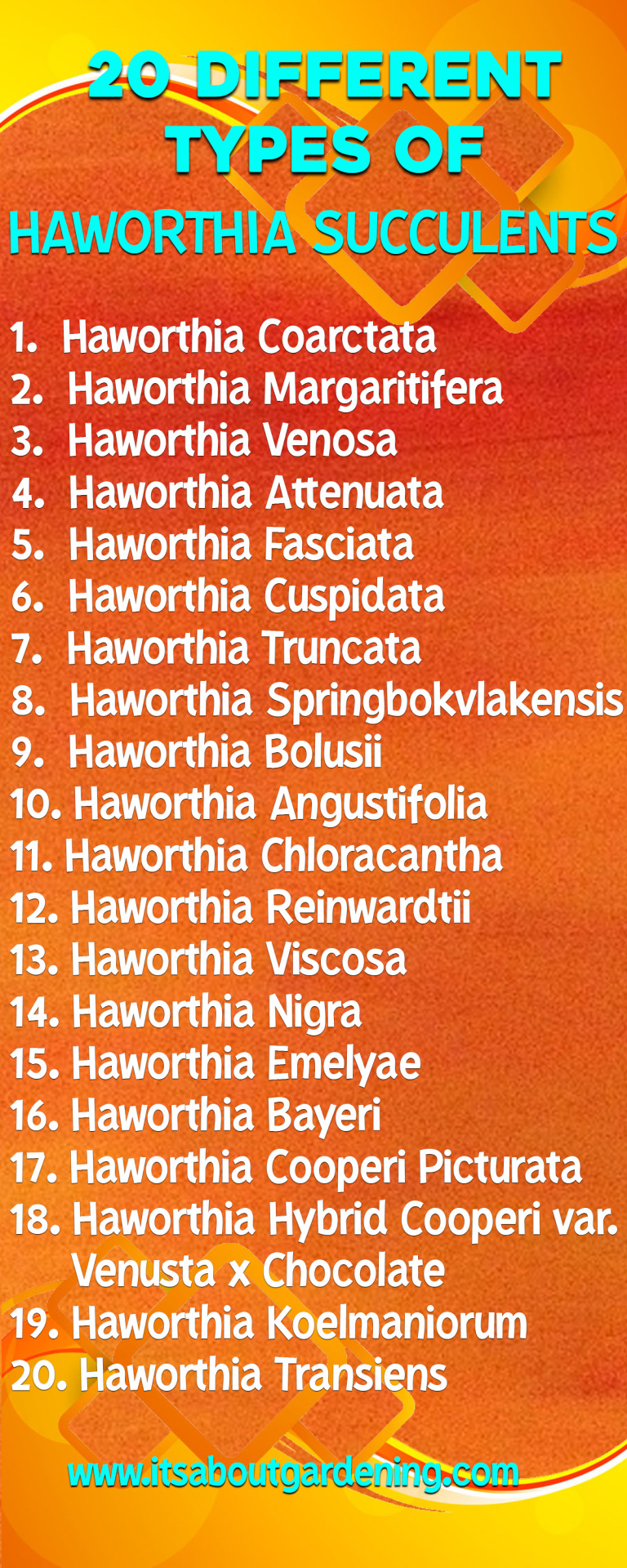
Different Types Of Haworthia Succulents
Did you understand the amount of species are under this kind of Haworthia Succulent plants? Well, there are about 150 species of them. Isn't it incredible? Most of these succulents are singular, and also some are clump-forming. You can further review listed below several of the various kinds of Haworthia succulents.
1. Haworthia Coarctata
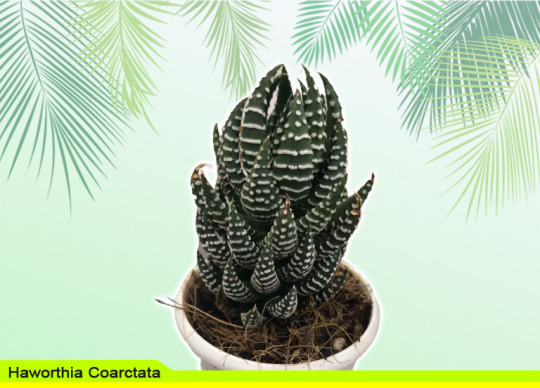
Haworthia Coarctata or Haworthiopsis Coarctata is a succulent citizen from South Africa. It is a slow-growing as well as clump-forming succulent that has interesting attributes. Haworthia coarctata has dark-green rosettes with pink and also curved ideas.
This delicious is not cold-hardy and can endure Zone 10a (minimum 30 0F -1.1 0C). It is additionally a dormant summer season sort of delicious but still chooses partial shade to complete sun. When this succulent expands, anticipate that it can get to 8 inches in elevation and 2 inches wide.
You can proliferate Haworthia Coarctata by its offsets, seeds, or leaves. It is very easy to care succulent as well as just needs regular watering.
2. Haworthia Margaritifera
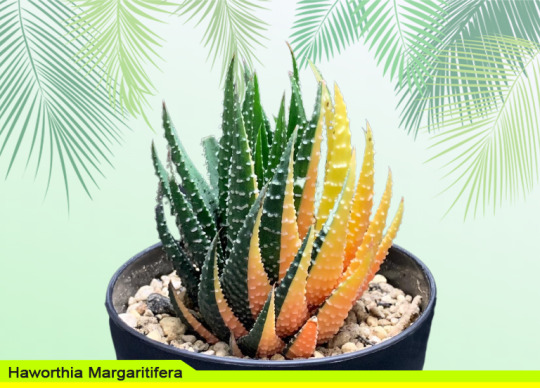
This succulent is recognized for several names: Haworthia Pumila or Pearl plant, Padding Aloe, and Fasciata Zebra cactus plant. With its one-of-a-kind as well as charming look, it is remarkably a low-maintenance plant.
When this succulent grows, it can rise to 4 inches in elevation and 6 inches wide. When its rosettes expand, you can expect that they grow in clumps. The fallen leaves of Haworthia Margaritifera have a tendency to expand up in a curving position.
Like any other succulents, the blooming season of this plant is during springtime. And when it blooms, it generates slim blossom stalks. Another piece of information about this delicious is that it can flourish in partial shade to full sunlight.
Still, it can not hold up against below 53o degrees Fahrenheit. A fascinating truth concerning Haworthia Margaritifera is it can meet thirty years! Isn't it amazing?
3. Haworthia Venosa
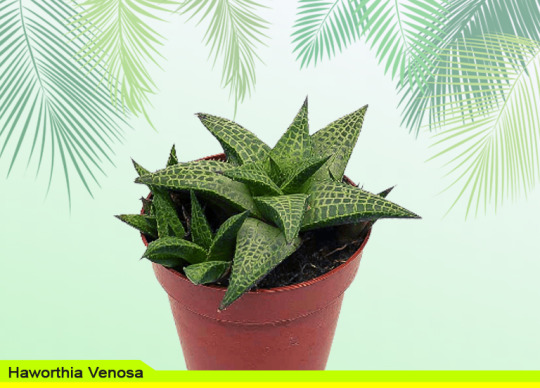
This succulent is native to the Southern part of Africa and Namibia. It has other names, such as Haworthia Tessellata, but the majority of Africans called it Venstertjie. This plant is not like any other plant because it is adaptable to both amazing and warm locations.
Though Haworthia Venosa still chooses low moisture with tool light and not direct sunshine. It can still make it through throughout wintertime with 15 0C or 59 0F temperature. Many garden enthusiasts as well as delicious collection agencies like this plant due to its lovely leaf markings and color.
When correctly cared for, Haworthia Venosa can grow up to 5 inches in elevation. As well as throughout the summer season, you can anticipate some little as well as white-colored blossoms on the top of its stem. It is additionally excellent to know that this succulent is safe to humans and also animals, so it is risk-free to have this plant anywhere you desire.
4. Haworthia Attenuata
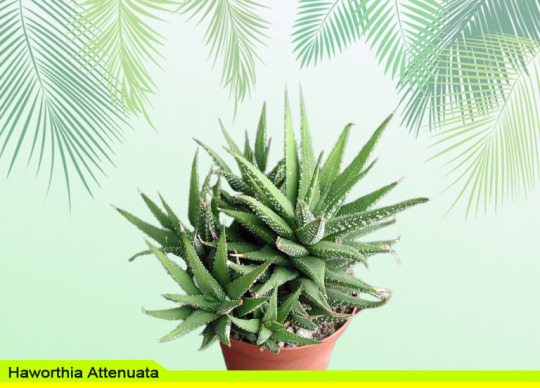
Haworthia attenuata is generally misinterpreted for Haworthia fasciata. Both of these succulents have an one-of-a-kind function: zebra stripes that surround each fallen leave of the plants.
Nonetheless, Haworthia attenuata has deserving developments as well as thick leaves than Haworthia fasciata. The rosettes of Haworthia attenuata can grow up to 8 inches high and 5 inches large, as well as these rosettes are available in globs.
Throughout the summertime period, which is flowering, this succulent generates tiny pink or white flowers on the leading end of the stem. Haworthia Attenuata's growing season is from April to September. As well as this succulent likes intense sunlight, so when positioned inside, it rarely blooms.
5. Haworthia Fasciata
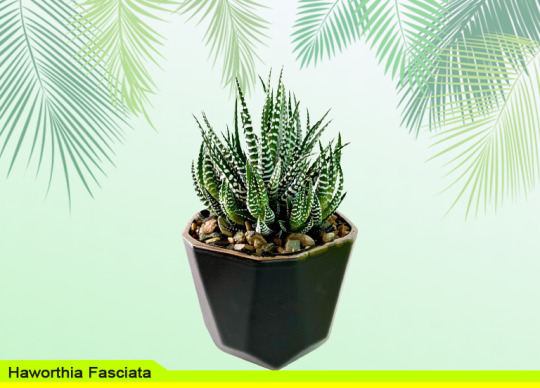
The name of this succulent came from the Latin word "fascia," which suggests "band or strip." Due to those white red stripes around its fallen leaves, it is likewise called Zebra Haworthia.
You can discover this plant in the Southern part of Africa. Aside from its special lines, it has dark-green fallen leaves, thick and also triangular. Even though Haworthia fasciata is a relatively tiny succulent as well as can just grow for concerning 5 inches, it still creates flowers.
These white-colored blossoms appear in springtime or summer season. This delicious is additionally not chilly hardy as well as likes bright sun, but can still grow well indoors. Other than that, it is likewise dry spell tolerant and also summer season dormant. Haworthia fasciata is risk-free to have around since it is safe to humans as well as animals. It is without a doubt real that Haworthia fasciata is a rare plant.
6. Haworthia Cuspidata
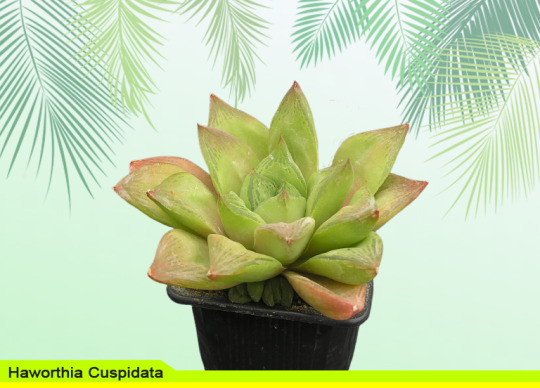
The name "Cuspidata" originated from the Latin word "cupidatus," which means "pointed." It has a scientific name of Haworthia Cymbiformis, however this succulent is widely popular as Star Home window Plant.
Haworthia cuspidata is understood for having uncommon rosettes such as sharp suggestions and also grey-green obovate leaves. These rosettes can mature to 4 inches in diameter. Despite the fact that Haworthia cuspidata is a stemless plant, it can still generate flowers.
Some white-colored blossoms show up in florescence in late springtime or mid-summer, which includes beauty to the plant. For this plant to accomplish its best appearance, it needs partial color to full sun.
It will require time before Haworthia Cuspidata comes to be a mature delicious given that it belongs to the slow-growing type of succulents.
7. Haworthia Truncata
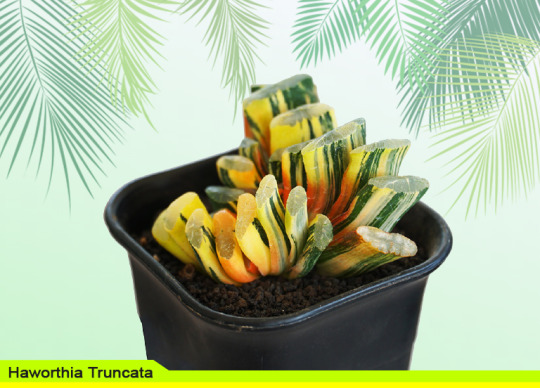
If a word can describe this succulent, that word is oddly attractive. Haworthia Truncata is an uncommon plant and is a native of Cape Province, South Africa.
This delicious is known for having leaves that appear like a horse's teeth. These leaves expand in thick clusters for concerning 3 to 5 inches in elevation. The small leaves are environment-friendly in shade and rectangular in shape. This kind of delicious kinds inflorescence stalks where white flowers show up in summer season.
Haworthia Truncata is an easy to care plant that only needs typical watering and also partial shade to complete sunlight. It is adaptable to temperature adjustments and can endure light frost yet not lower than 41 0F.
8. Haworthia Springbokvlakensis
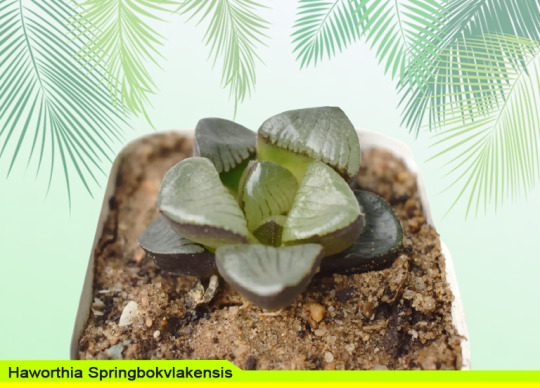
This succulent is not an usual type of plant. It has distinct functions such as brownish red stripes on its transparent, gray-green leaves.
Other than that, Haworthia Springbokvlakensis's vegetation has actually rounded leaf tips, which makes it more cute.
Those fallen leaves can mature to 2 to 3 inches in height and 0.6 wide. This kind of succulent is commonly little and also slow-growing. In summer, it generates lovely white flowers. The majority of garden enthusiasts enjoy this plant since it is simple to care for and not testing to grow.
9. Haworthia Bolusii
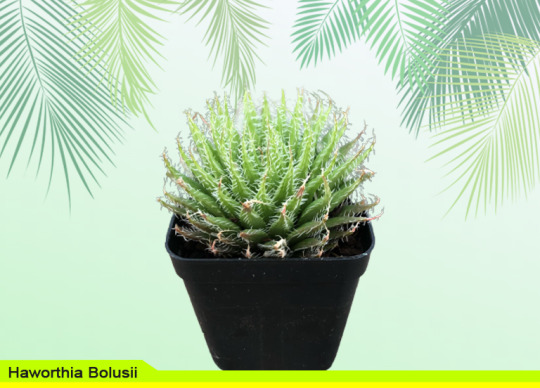
This stemless succulent can mature to 6 inches in height. It has fleshy eco-friendly leaves that can mature to 3.2 inches wide. Haworthia Bolusii's foliage is incurved fit and also extends inwardly in a curved instructions.
When you look better, this succulent has transparent thorns on its margins, as well as from afar, those thorns look like a crawler web. In late springtime to early summertime, Haworthia Bolusii generates little white flowers with brownish blood vessels.
For this succulent to grow, it requires a warm temperature level in summer season and a cool temperature level in winter season. Excessive heat and cold may harm this plant.
10. Haworthia Angustifolia
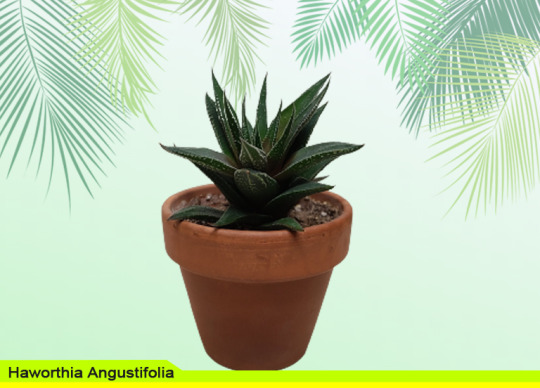
Haworthia Angustifolia gets its name from the Latin words "Angus," which implies "slim," and "folium," which suggests "fallen leave." That is why it is likewise called Narrow-leaved Haworthia.
This plant is belonging to South Africa, as well as unlike many Haworthia's, Haworthia Angustifolia is a fast-growing succulent. The only similarity of this succulent to others is its height. Haworthia Angustifolia is relatively little and also can just grow up to 3.2 inches in size as well as 4 inches in elevation.
Its rosette is composed of soft, narrow, and also fleshy-green leaves that grow in a vertical instructions. In springtime, this plant produces white flowers that expand in inflorescence. It additionally prefers partial shade rather than complete sunshine.
11. Haworthia Chloracantha
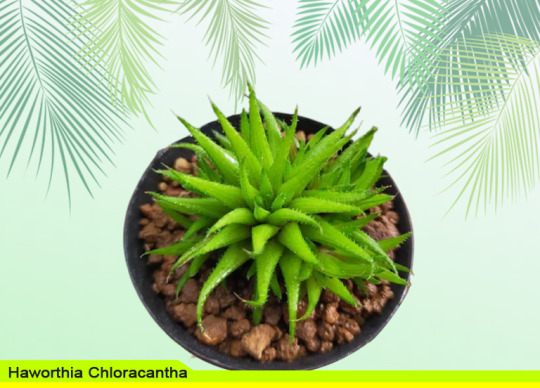
This succulent is a well-known yard or container plant. It has yellow-green leaves as well as a red facility that expands in globs. Each rosette has 18-25 fallen leaves which can mature to 1.6 inches long.
It is a low-maintenance plant that can grow in partial color and also just needs very little and also hardly ever watering. Haworthia Chloracantha is likewise frost-hardy and also can endure in a place with a temperature level of -5 oC.
The very best month to plant this delicious remains in March, when it is proactively expanding. And also its blooming time is in summertime, where it generates tiny white flowers.
12. Haworthia Reinwardtii
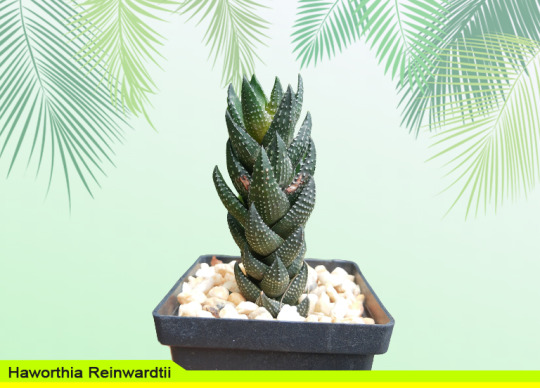
Haworthia Reinwardtii is a little clump-forming succulent referred to as African Pearls. The fallen leaves at the bottom of the plant are huge, and there are noticeably tiny white warts at the rear of each fallen leave that are rough in appearance.
This plant can grow up to 8 inches in height, as well as you can propagate it in seeds or offsets. Haworthia reinwardtii is not chilly durable and favors warmer temperature levels to expand beautifully. It creates white blossoms in springtime as well as is relatively safe to people and pet dogs.
13. Haworthia Viscosa
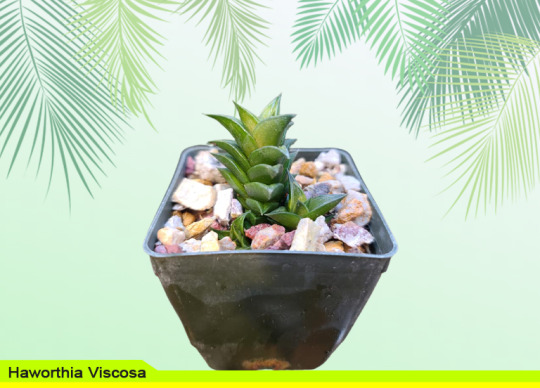
This succulent is one of the special types of Haworthia. It has actually extended rosettes loaded with three-column triangular fallen leaves.
Each leaf can reach 1.6 inches in elevation and also has a green to reddish shade. Haworthia Viscosa is also frost durable succulent and also can stand up to -5 0C. This succulent generates white to pinkish blossoms that show up in inflorescence.
It is best to grow this succulent in March when growing season and also area it in partial shade to achieve its ideal color.
14. Haworthia Nigra
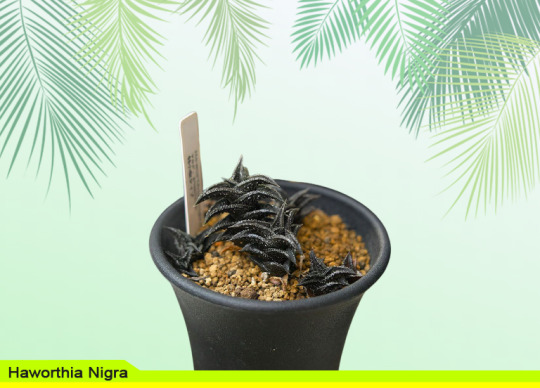
Haworthia Nigra is also known as Black Haworthia as well as is belonging to South Africa. It has rosettes that can grow up to 10 centimeters high and also 6 centimeters vast.
It has noticeable dark environment-friendly to nearly black colored leaves that expand in three columns and also is triangular. Haworthia Nigra is a slow-growing but low-maintenance plant. It doesn't need much effort to create this succulent.
It can grow as long as you supply partial color and also minimal watering. Like any other Haworthias, Haworthia Nigra additionally generates white flowers in springtime. This plant is non-toxic to human beings and also animals, so it is safe to have it around.
15. Haworthia Emelyae
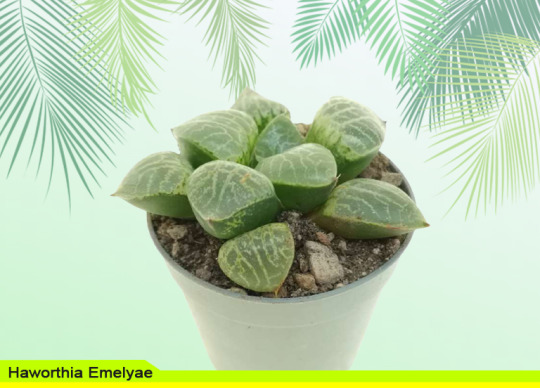
Haworthia Emelyae or Haworthia Picta is a tiny delicious that expands fleshy eco-friendly fallen leaves in a triangular form. Each leaf has white lines that appear like blood vessels. Haworthia emelyae can mature to 5 inches high. In springtime, it produces white flowers that are relatively tiny and also odorless.
16. Haworthia Bayeri
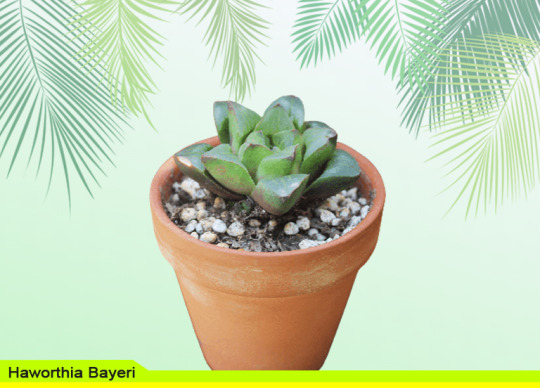
This succulent is also called "Moon Darkness." It is slow-growing yet among one of the most enjoyed kinds of Hawothias due to its indisputably stunning markings.
Haworthia bayeri has dark-colored fallen leaves with rounded pointers. From spring to summer, this plant produces whitish-green blossoms.
It is a low-maintenance plant, so there is no demand to spend lots of money. Haworthia bayeri is also versatile to various temperatures yet still favors cozy temperature levels in summer as well as cool in winter.
17. Haworthia Cooperi Picturata

Haworthia Cooperi Picturata is a small stemless succulent. It has yellow-green leaves that grow in a curvy internal instructions which creates globs.
Each leaf has environment-friendly cellular linings, aimed tips, and little white thorns. Haworthia Cooperi Picturata creates pinkish-white blossoms from springtime to summertime. This sort of Haworthia is an essential succulent, and it is an excellent indoor or outside plant.
18. Haworthia Hybrid Cooperi var. Venusta x Succulent chocolate
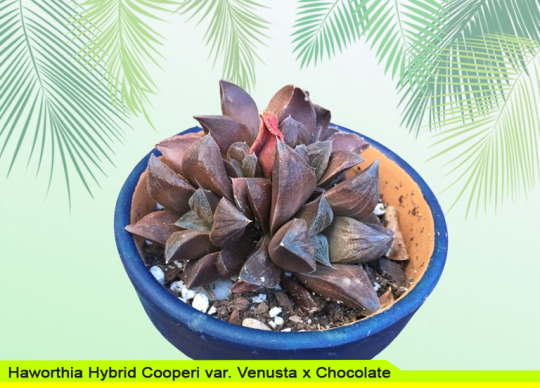
This kind of Haworthia is a hybrid with amazing reddish-brown colored fallen leaves. Its fallen leaves are thick as well as rough and also have a triangular form.
When mature, this succulent can reach 5 inches tall - Haworthia Hybrid Cooperi var. Venusta x Chocolate or Haworthia Chocolate chooses partial color to full sun. It is additionally drought-tolerant to ensure that it can thrive without water for weeks or months.
19. Haworthia Koelmaniorum

Haworthia Koelmaniorum is a kind of Haworthia that is belonging to the North part of South Africa. It is a succulent that adjustments shade gradually, from brownish environment-friendly to red shade. Its leaves are harsh and thick.
In summertime, this Haworthia creates white flowers. Bright light is required for this plant to achieve its natural shade as well as prosper. Unlike various other Haworthias, Haworthia Koelmaniorum seldom has a balanced out.
20. Haworthia Transiens
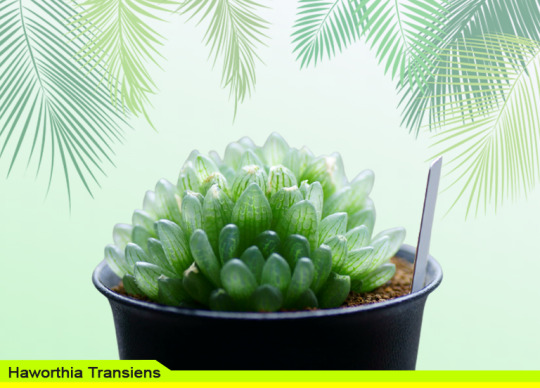
Haworthia Transiens is a stemless plant that has fleshy light eco-friendly foliage. Its leaves are rather rounded with sharp red ideas. Despite the fact that this type of Haworthia is a terrific indoor or exterior plant, it can just grow up to 2 inches tall considering that it is a fairly little delicious.
The 20 noted various kinds of Haworthia succulents over are just several of the must-haves. Haworthias are very easy to care for, and you can select from a wide variety of choices. They might all look comparable in dimension, however their one-of-a-kind attributes are various from one another. It is really impossible to stand up to the beauty of this type of plant. It is also excellent to recognize that Haworthias are human and pet-friendly, with low-maintenance house plants.
If you desire extra HAWORTHIA CARE GUIDE AND PROPAGATION TIPS, click the link and also you will see our ideas as well as guide to care the Haworthia.
#DIFFERENT TYPES OF HAWORTHIA SUCCULENTS#Haworthia Coartata#Haworthia Margaritifera#Haworthia Venosa#Haworthia Attenuata#Haworthia Fasciata#Haworthia Cuspidata#Haworthia Truncata#Haworthia Springbokvlakensis#Haworthia Bolusii#Haworthia Angustifolia#Haworthia Chloracantha#Haworthia Reinwardtii#Haworthia Viscosa#Haworthia Nigra#Haworthia Emelyae#Haworthia Bayeri#Haworthia Cooperi Picturata#Haworthia Hybrid Cooperi Var. Venusta x Chocolate#Haworthia Koelmaniorum#Haworthia Transiens
0 notes
Text
DIY CACTUS SOIL: HOW TO MAKE CACTUS SOIL MIX | itsaboutgardening.com
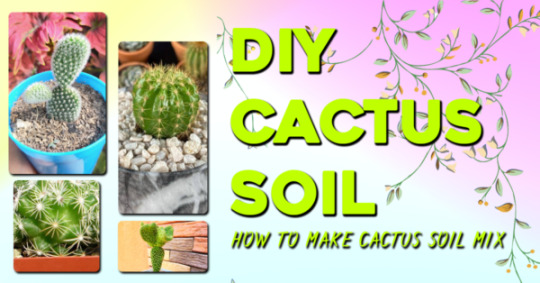
Do-it-yourself or DIY cactus soil is a great deal less expensive and also has a well-assured quality than the marketed one. It is economical for the majority of gardeners, specifically when the ingredients are currently offered in their very own homes.
Meanwhile, its top quality is well-assured because you are the one that will certainly make it, you can manage the variety of components you intend to use, as well as you can make certain that there are no ingredients that may hurt your cactus plant.
Keeping that claimed, have a look at the following details, as these might guide you on your DIY cactus soil trip.
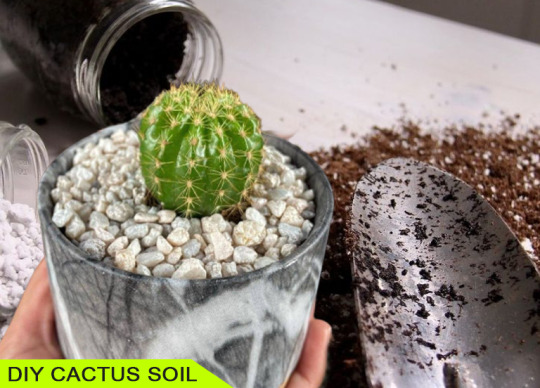
DIY CACTUS SOIL
In generating your DIY cactus dirt, it is important to prepare the following active ingredients:
Potting soil - usage potting dirt that is well-draining, fresh, permeable, and also healthy. However, stay clear of using heavy garden soils as well as the one that holds a lot dampness.
Coarse sand - select the crude sand kind as opposed to the fine one. On the other hand, prevent using sand from various sources such as sand from your garden, beach, or sandbox.
Perlite/ Pumice - It is a white various other natural dirt used to prevent the soil's compactness.
Peat - This type of moss typically matures in the marsh and is frequently used in plants as a fertilizer. Additionally, you can utilize this to reduce the high pH level of the Do It Yourself cactus dirt.
Gravel - These are little rocks that provide oxygenation when contributed to your Do It Yourself cactus soil.
Coir - is utilized as a substitute when peat moss is not offered to keep wetness needed by the soil.

OTHER SUPPLIES NEEDED FOR DIY SOIL
Other than the ingredients mentioned over, you will also need to prepared the following products:
A measuring mug or container
A container for mixing (it can be a container, pail, plastic container, or tabletop potting tray).
A trowel.
Gloves suitable for horticulture.

RECIPE FOR DIY CACTUS SOIL
Since you already understand what the active ingredients as well as supplies you will need to make your Do It Yourself cactus soil are, it is now the time to familiarize yourself with the DIY cactus soil recipe. You will certainly need 3 parts of potting dirt, 3 elements of crude sand (if it is not available, you can utilize crushed rock or turface as a substitute), and finally, 2 parts of perlite or pumice. When potting the cactus plant, you might need a couple of spoons of crushed rock.
To be clear about the recipe, the basic measurement system 'part' pertains to your potting mix proportion. Definition, you can utilize any type of container, whether inside story or mug, to gauge your active ingredients as the matching of 'part.'.
For instance, you will certainly determine your components using a mug as the matching of 'component,' where you determined 3 mugs of coarse sand (3 parts of crude sand). For that reason, you will likewise use a cup as the matching of 'component' with the various other components (potting soil, perlite, or pumice).
PROCEDURE IN MAKING DIY CACTUS SOIL
Combining the determined ingredients to create your DIY cactus soil is a breeze to ensure you have actually all the determined components and also supplies prepared. To direct you in making your DIY cactus soil, have a look at the adhering to treatment:.
Put on your gloves.
Prepare the measured ingredients.
Slightly wet the potting soil to stay clear of dirt when mixing it in the container.
Include the rugged sand to the potting dirt and also blend them completely using your hands or a trowel for at least 7 mins.
Next, integrate the determined perlite or pumice with the mixture. Mix extensively for about 5 minutes.
When potting your cactus plant, you can put a layer of crushed rock at the end of the pot but ensure not to obstruct the drain holes.
Make certain to measure the pH degree of your DIY cactus soil. When the result is listed below or more than the advised pH level, you can include a small quantity of peat moss to your cactus soil blend and mix them effectively.
After that, test the pH degree of the soil blend again. If the result does not meet the advised pH degree, remodel the procedure up until you attained the suggested pH degree of your DIY cactus soil.
BENEFITS THAT YOU CAN GET ON DIY CACTUS SOIL
Cactus soil uses several benefits that you may love as a plant lover:.
It is budget-wise or not expensive, wherein it can aid you save cash.
You can change your cactus soil mix.
It reduces your tension due to the fact that it can be an exercise that allows you to be more energetic.
You can acquire new discovering as well as abilities.
It will offer you satisfaction as well as complete satisfaction.
It assists you conserve money and generate income; when you understood making Do It Yourself cactus soil, you can make it your business.
As a plant lover, what you want is what is best for your plants. That is why you are going to try to find ways for them to grow. One component of gardening that is regarded essential is the soil. With that said, you always want to ensure that the cactus plant will prosper best on the soil you selected.
One method to ensure this is the do-it-yourself cactus dirt, wherein you can modify your dirt combination. You can guarantee that it is safe to utilize for your cactus plants. As long as you have the active ingredients that are measured properly and followed the recommended dish and also procedure, you can grasp the skill of producing your Do It Yourself cactus soil.
#DIY CACTUS SOIL#How to make Cactus Soil Mix#Supplies Needed for DIY Soil#Recipe for DIY Cactus Soil#Procedure and Making DIY Soil#Benefits can get on DIY Soil
0 notes
Text
TYPES OF CACTUS WITH UNIQUE LOOK AND HOW TO CARE FOR THEM |itsaboutgardening.com
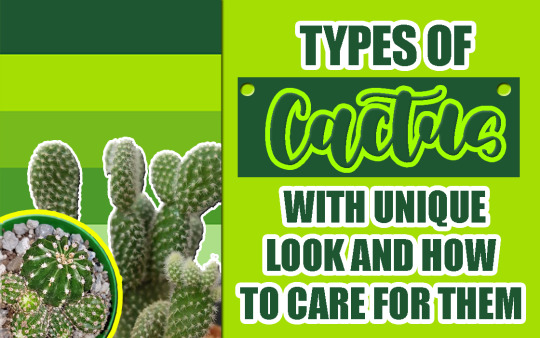
Types of cactus - Some cactus collectors usually seek sorts of cactus plants with one-of-a-kind looks. Cactus is among one of the most well-known plants nowadays.
Some gardeners like to look after this plant due to the fact that it is not demanding, unlike the other plants that call for a great deal of focus and treatment.
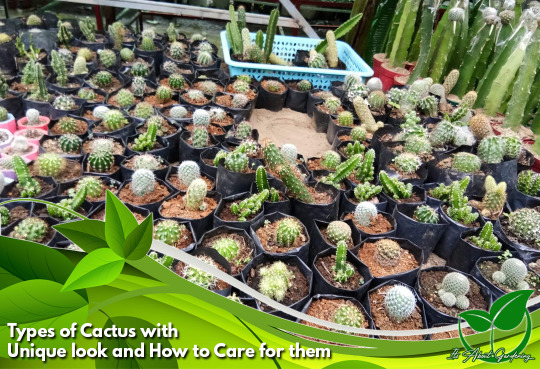
There are many different types of cactus plants and species that garden enthusiasts appreciate due to their special look and do not need a lot of treatment.
Here are some kinds of Cactus as well as some suggestions on exactly how to care for them
Types of Cactus with Unique look and how to Take Care of them
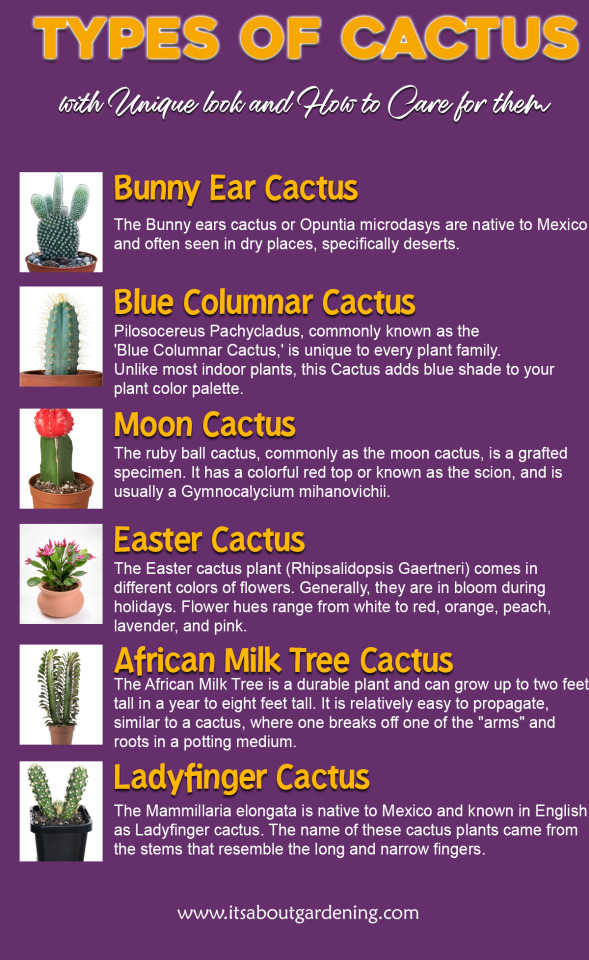
The following cactus kinds possess a special look that will certainly transform your yard or house rooms right into a highlighted and attractive one. As all of us know, cactus are not requiring, so looking after them is a little comfortable with very little interest.
The following are sorts of cactus and some overviews on how to care for them.
Bunny Ear Cactus

The Bunny ears cactus or Opuntia microdasys are belonging to Mexico and also often seen in completely dry places, especially deserts.
Dealing with bunny ears cactus is very simple because their native homeland is a bare desert. They can survive in a warm climate and also a lot of direct exposure to the sunlight.
The bunny ears cactus plants might be the ideal plant for you considering that it doesn't require much attention as well as mainly undemanding.
Bunny Ears Cactus Care
Handling. Use thick rubber gloves or utilized newspaper in touching up the pad of the rabbit ears cactus. Dry the cut section for three days before replanting it on a cactus soil mix.
Soil. Make use of an outstanding cactus mix for growing rabbit ears cactus, or you can make your mix.
Watering. These plants are a garden enthusiast's pick for their low maintenance as well as appealing look. However, overwatering this plant may cause the plant's fatality. Interval watering, or watering when the topsoil is dry, is suggested.
Food. You can provide fertilizer to your bunny ears Cactus every summer season or spring to keep your plant healthy.
pests. These Cactus kinds are prone to troubles like mealybugs and also scale insects, particularly on the cacti's pad. Protect against these bugs from ruining plants by using a fungicide. Other gardeners scrub alcohol on the plant to get rid of the troubles.
Repotting: The bunny ears don't require continuous repotting. When every year suffices given that this plant is a slow-growing type of cactus.
Blue Columnar Cactus

Pilosocereus Pachycladus, typically called the 'Blue Columnar Cactus,' is one-of-a-kind to every plant family. Unlike the majority of indoor plants, this Cactus adds blue color to your plant color palette.
The plant's color as well as natural, soft-grey coating contrasts the Cactus spikes, appropriate artwork by the environment.
Blue Columnar Cactus Care
Light: Like the other cacti, they require lots of straight sunshine to flourish.
Water: They need a steady water system during the summertime and also prevent overwatering them, which can cause root rot.
Temperature: Blue columnar Cactus favors hot exotic temperature levels, ideally around or over 70 levels Celcius.
Soil: This Cactus chooses completely dry soil with some natural nutrients, as well as excellent drain is crucial.
Moon Cactus
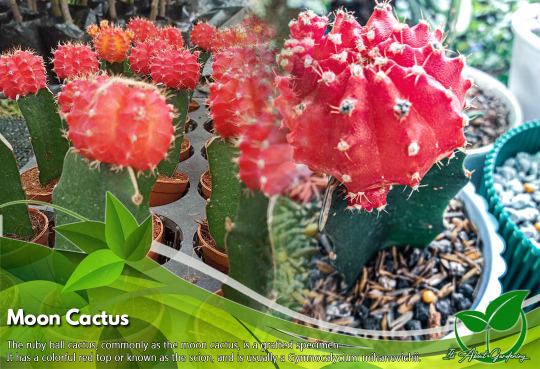
The ruby round cactus, frequently as the moon cactus, is an implanted sampling. It has a vibrant red top or referred to as the successor, and also is normally a Gymnocalycium mihanovichii.
The rootstock in the moon cactus can be several ranges of cactus plants, yet generally, some gardeners use dragon fruit because of its tough body.
Moon Cactus Care
Light: The heir likes color and also does not such as straight sunshine. Nonetheless, the rootstock prefers sunshine, unlike the successor. Putting them in a bright location is recommended.
Soil: Moon cactus prefers rich and quick-draining dirt combines with a reduced pH. See to it to utilize dirt loaded with great deals of nutrients to keep the rootstock healthy and balanced.
Water: Make certain that the soil becomes completely dry prior to sprinkling your moon cactus once again. Avoid soaking it in wet soil for more than a day due to the fact that it may trigger rot. The moon cactus plant requires adequate watering, specifically throughout the summertime. During the winter season, water them consistently is not needed. Misting them every now and then is okay.
Fertilizer: The moon cactus doesn't require plant foods consistently, yet during its expanding season, you should provide a cactus plant food to keep them healthy and balanced.
Repotting: Repot your moon cactus as often as feasible, ideally during the summer season. When repotting a cactus, maintain the dirt dry before repotting and remove it from its pot carefully to avoid root devastation. Remove the old dirt, seek pest check in the origins, and then cut the dead roots from the Cactus If tiny pests are prowling on the plant's roots, wash them meticulously in running water. Usage fungicide in treating the cuts. Position the plant and thoroughly position it in a pot as well as fill potting soil mix planned for cactus plants. Avoid watering the freshly potted plant in a week to prevent origin rot.
Easter Cactus

The Easter cactus plant (Rhipsalidopsis Gaertneri) is available in different shades of blossoms. Generally, they remain in bloom during vacations. Flower shades vary from white to red, orange, peach, lavender, as well as pink.
Easter Cactus Care
Watering: Offer your Easter cactus a good pour of water & allow all of it drainpipe extensively out of its pot. Make certain the plant goes completely dry prior to watering it again.
Light: Easter cactus prefer intense all-natural light without any direct light from the sunlight. Straight sunlight will burn the fleshy fallen leaves of a Spring Cactus
Soil: Easter cactus expand on other plants, rocks & bark in their native environments. They do not grow in soil. In nature, they feed off fallen leave matter & debris, which means they like an extremely permeable blend with some richness.
Fertilizing: Wait up until 1-2 months after your Springtime Cactus has completed its bloom to fertilize. You want it to relax before striking it with the great things.
African Milk Tree Cactus

The African Milk Tree Cactus is a sturdy plant as well as can grow up to two feet high in a year to 8 feet tall.
It is reasonably simple to propagate, similar to a cactus, where one breaks off one of the "arms" and also roots in a potting tool.
African Milk Tree Cactus Care
Light: This sort of cactus plant chooses indirect yet intense sunlight. Nevertheless, it can additionally deal with full sunlight direct exposure as long as the summertime's are not too consistently warm.
Soil: This type of Cactus is not as well precise about dirt mixes, but good drain can make your cactus healthy. Heavy clay soil might limit growth and impede drain.
Water: The African milk tree does not require much water. If there is a terrible dry spell, consider supplemental watering at the origins. Yet otherwise, average rainfall should suffice.
Temperature and Humidity: This drought-tolerant plant prefers a dry or dry climate and can tolerate warm temperatures. If grown in an area with scorching summers, the plant ought to be put in a place with partial color to avoid overheating.
Ladyfinger Cactus
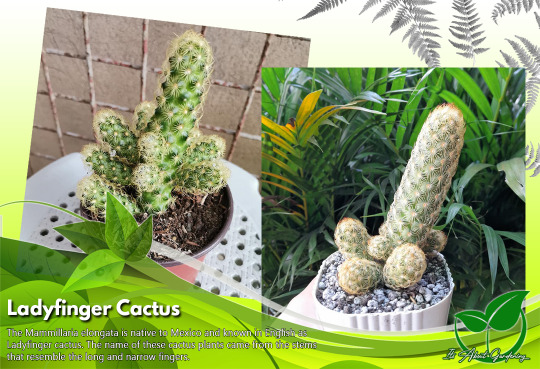
The Mammillaria elongata is native to Mexico as well as recognized in English as Ladyfinger cactus. The name of these cactus plants came from the stems that resemble the long and also narrow fingers.
They expand from the center and also obtain even more vast and spilling as it expands longer. The ladyfinger is an outstanding option for gardens that require a slow-spreading plant, a small container, or a hanging pot.
Ladyfinger Cactus Care Guide
Light: If you are going to placed it outdoors, make certain the climate is warm and humid like the desert considering that it is native to that sort of environment. Nevertheless, these cactus types can additionally make it through without straight sunshine, gave that they remain in a well-lit area.
Watering: The ladyfinger cactus can endure dry spell, just like the majority of Cactus types however make certain they obtain enough water occasionally. However, prevent overwatering them since it might trigger root rot.
Temperature and Humidity: The ladyfinger cactus requires a container brought particularly for indoors. See to it the area is well-ventilated and a bright area where it can indirectly receive sunshine.
Soil: This sort of Cactus favors to utilize a common cactus soil mix and also ensure you grow it in a well-draining container or garden bed.
Types of cactus plants with unique looks and how to care for them - The adhering to cactus types pointed out above are a terrific enhancement to your garden, and they all possess an unique appearance.
Do you understand that they likewise have the one-of-a-kind capability to take in damaging chemicals released by our gadgets or what we call radiation?
Consequently, we can add them to our outdoor garden and also in our residence areas.
#TYPES OF CACTUS#Bunny Ear Cactus#Blue Columnar Cactus#Moon Cactus#Easter Cactus#African Milk Tree Cactus#Ladyfinger Cactus#Cactus Care
1 note
·
View note
Text
DIY CACTUS SOIL: HOW TO MAKE CACTUS SOIL MIX | itsaboutgardening.com

Do-it-yourself or DIY cactus soil is a whole lot cheaper as well as has a well-assured top quality than the advertised one. It is cost effective for the majority of garden enthusiasts, especially when the active ingredients are already available in their very own homes.
At the same time, its quality is well-assured because you are the one who will certainly make it, you can manage the variety of active ingredients you intend to utilize, as well as you can ensure that there are no additives that might harm your cactus plant.
With that said stated, have a look at the complying with information, as these may lead you on your DIY cactus soil trip.

DIY CACTUS SOIL
In generating your DIY cactus soil, it is essential to prepare the complying with active ingredients:
Potting soil - use potting soil that is well-draining, fresh, porous, and healthy. On the contrary, prevent utilizing heavy garden soil and also the one that holds a lot dampness.
Coarse sand - select the coarse sand type rather than the great one. On the other hand, avoid utilizing sand from various resources such as sand from your yard, coastline, or sandbox.
Perlite / Pumice - It is a white various other natural soil used to stay clear of the soil's density.
Peat - This sort of moss typically matures in the wetland and is commonly used in plants as a fertilizer. Moreover, you can use this to decrease the high pH degree of the DIY cactus dirt.
Gravel - These are little rocks that supply oxygenation when included in your DIY cactus dirt.
Coir - is utilized as a substitute when peat moss is not available to hold back wetness required by the soil.

OTHER SUPPLIES NEEDED FOR DIY SOIL
Apart from the active ingredients stated over, you will also need to ready the following supplies:
A determining mug or container
A container for mixing (it can be a bucket, container, plastic basin, or tabletop potting tray).
To trowel.
Gloves suitable for gardening.
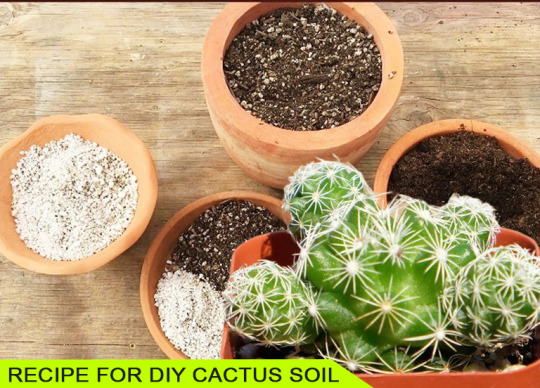
RECIPE FOR DIY CACTUS SOIL
Since you already understand what the components and products you will certainly need to make your Do It Yourself cactus soil are, it is now the time to familiarize yourself with the DIY cactus soil recipe . You will certainly need 3 parts of potting soil, three aspects of rugged sand (if it is not readily available, you can make use of gravel or turface as a substitute), and also lastly, 2 parts of perlite or pumice. When potting the cactus plant, you may require a few spoons of crushed rock.
To be clear regarding the recipe, the basic measurement system 'part' concerns your potting mix proportion. Meaning, you can use any container, whether scoop or mug, to gauge your ingredients as the equivalent of 'part.'.
For example, you will certainly determine your components using a mug as the equivalent of 'part,' in which you gauged 3 mugs of coarse sand (3 parts of rugged sand). Consequently, you will certainly additionally use a cup as the matching of 'part' with the other ingredients (potting soil, perlite, or pumice).
PROCEDURE IN MAKING DIY CACTUS SOIL
Incorporating the measured active ingredients to create your DIY cactus dirt is a piece of cake to ensure you have actually all the gauged ingredients as well as supplies all set. To guide you in making your DIY cactus soil, have a look at the adhering to procedure :.
Place on your gloves.
Prepare the gauged components.
Slightly wet the potting soil to stay clear of dirt when blending it in the container.
Add the coarse sand to the potting dirt and also blend them extensively utilizing your hands or a trowel for at the very least 7 mins.
Next, integrate the gauged perlite or pumice with the mixture. Mix completely for around 5 minutes.
When potting your cactus plant, you can put a layer of gravel at the bottom of the pot yet ensure not to obstruct the water drainage openings.
Ensure to gauge the pH level of your DIY cactus soil. When the outcome is below or higher than the suggested pH degree, you can include a small quantity of peat moss to your cactus soil mix and also stir them effectively.
Then, test the pH level of the soil combination again. If the outcome does not fulfill the recommended pH level, redo the procedure till you achieved the suggested pH degree of your Do It Yourself cactus soil.
BENEFITS THAT YOU CAN GET ON DIY CACTUS SOIL
Cactus soil supplies many benefits that you might love as a plant enthusiast :.
It is budget-wise or otherwise costly, in which it can assist you save cash.
You can modify your cactus soil mix.
It lowers your tension due to the fact that it can be an exercise that allows you to be much more active.
You can obtain new learning and abilities.
It will provide you gratification as well as satisfaction.
It helps you save money as well as generate income; as soon as you understood making Do It Yourself cactus dirt, you can make it your service.
As a plant lover, what you want is what is ideal for your plants. That is why you are going to seek methods for them to prosper. One element of gardening that is deemed important is the soil. With that, you constantly intend to make sure that the cactus plant will prosper ideal on the soil you chose.
One means to guarantee this is the do-it-yourself cactus soil, where you can customize your dirt mix. You can make certain that it is secure to utilize for your cactus plants. As long as you have the ingredients that are determined correctly and followed the recommended dish and also procedure, you can understand the skill of producing your DIY cactus soil.
#DIY CACTUS SOIL#Supplies Needed for DIY Cactus Soil#Recipe for DIY Cactus Soil#Making DIY Cactus Soil#Benefits can get DIY Cactus Soil
0 notes
Text
DIFFERENT TYPES OF CACTUS PLANT AND SPECIES |itsaboutgardening.com
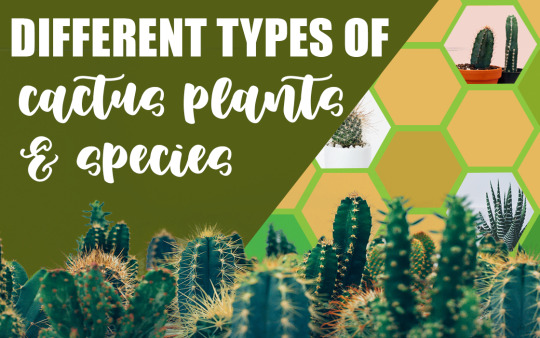
DIFFERENT TYPES OF CACTUS PLANT: Did you recognize that having cacti in your house or office will make your day productive, serene, as well as in some way rewarding?
Cactus plants are excellent plants to have about for added peace, leisure, as well as extensive healing issues. Aside from their distinct physique, these are also low-maintenance as well as can entirely live without taking too much care of them.
To help you locate the perfect types of cactus with a unique look and how to care for the plant to put in your office or home, these are the different kinds of cacti you might choose from:
Moon Cactus (Gymnocalycium Mihanovichii)
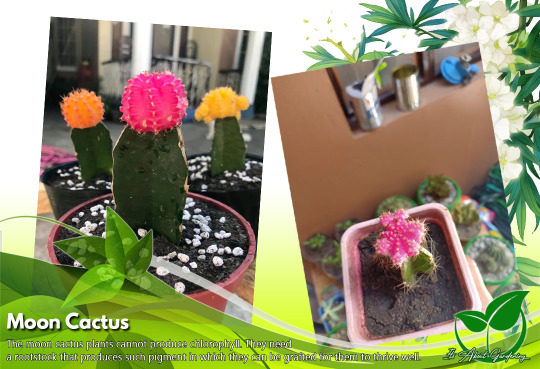
One of one of the most popular cacti types for house gardens is that the Moon Cactus can be quickly acknowledged as a result of its vibrant neon orange, yellow, purple, red, or pink lollipop-like forms that sit atop a rootstock.
The moon cactus plants can not create chlorophyll. They need a rootstock that generates such pigment in which they can be grafted for them to prosper well. They can also be grown inside if provided with sufficient light.
Moon cacti are classified as small cactus plants. They can expand just as much as 0.5 inches in width. However, some growers can grow up to 8 inches in diameter.
Bunny Ear Cactus (Opuntia Microdasys).
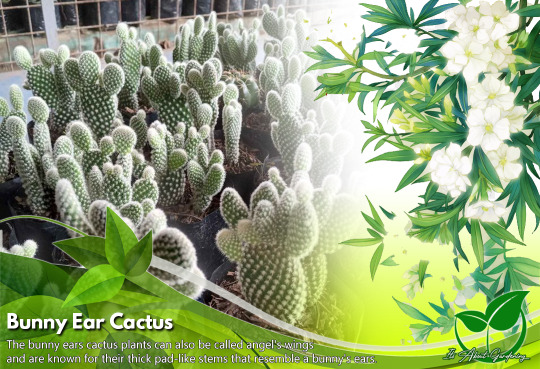
The Bunny ears cactus plants can also be called angel's wings as well as are recognized for their thick pad-like stems that resemble a bunny's ears.
The bunny ears can be quickly grown in a completely dry, low humidity residence with lots of sunlight exposure. It is originated in Mexico and also is usually in arid, desert-like areas.
Bunny ears can grow up to 2 to 3 feet or 61-91 centimeters high with a spread of 4 to 5 feet in their native habitat. Nonetheless, it is a slow-growing plant that will likely reach 2 feet in elevation and have regarding the very same size when placed on house.
Old Lady Cactus (Mammillaria Hahniana)
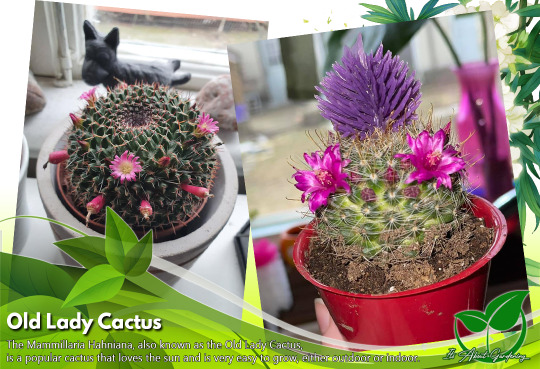
The Mammillaria Hahniana, additionally called the Old Lady Cactus, is a prominent cactus that enjoys the sunlight and is really easy to grow, either exterior or interior. It receives a lot of sunshine.
The old woman cacti, which is native to Mexico, really thrives in a warm and also dry environment. Stay clear of putting this plant in shaded locations to stay clear of rot.
This cacti is lovely with its lone spherical stems and can develop blossoms in colors of red-purple. It can mature to roughly 4 inches tall and also 8 inches wide.
Star Cactus (Astrophytum Asterias)

The Star Cactus is a spineless cactus with a thick round body appearing like a sand buck. Celebrity cacti plants are quite pleasing to the eyes and really easy to expand, making them best as a yard display.
It can be placed inside your home as long as it gets enough light from the sunlight. It is really easy to grow as well as completely thrives in disregard. Nevertheless, the body will flatten out and turn brownish if it is in alarming requirement of water; consequently, watering them periodically benefits this plant.
The Star cactus' body can only grow up to 2-6 inches throughout with jagged sides. It has 8 sections with great white hairs. It can likewise grow 3-inch blossoms in yellow colors with orange facilities. The blossoms will certainly turn berry-like with grey, pink, or red color covered in wooly hair.
Easter Cactus (Hatiora Gaertneri)
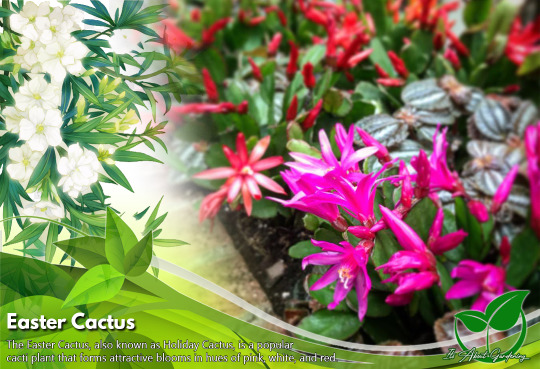
The Easter Cactus, additionally called Holiday Cactus, is a preferred cacti plant that creates eye-catching blossoms in hues of pink, white, and also red. It is called after the holiday season which they showcase their blossoms.
The Easter cactus plants are native to the southeastern exotic forests of Brazil. This plant has tubular-shaped flowers and fractional leaf-like stems with sharp serrated sides. It is occasionally referred to as crab cactus due to the fact that it partially appears like the crab's legs.
This cacti plant can mature to 12 inches high and also up to 24 inches in size.
Fairy Castle Cactus (Acanthocereus tetragonus 'Fairy Castle')
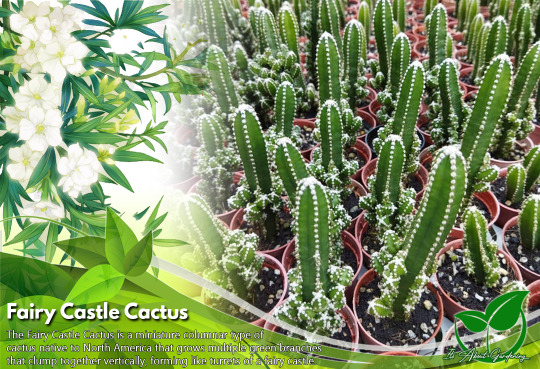
The Fairy Castle Cactus is a mini columnar kind of cactus native to The United States and Canada that grows numerous environment-friendly branches that glob with each other vertically, creating like turrets of a fairy castle.
This cacti plant is extremely simple to grow, that makes it best for novices. Each of its stems has five sides with short white spinal columns. It expands well both inside your home as well as outdoors or as long as it gets enough sunshine.
The Fairy castle cacti can grow up to 6 feet tall and actively expands in springtime and loss.
Golden Barrel Cactus (Echinocactus Grusonii)
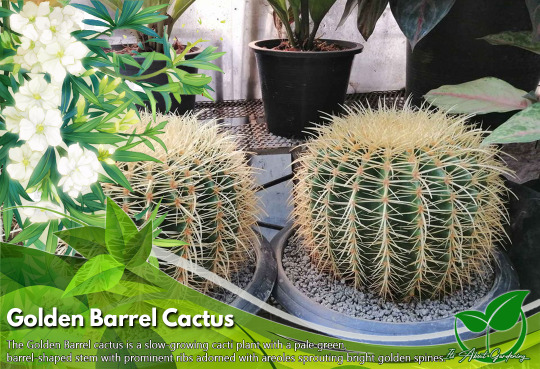
The Golden Barrel cactus is a slow-growing cacti plant with a pale eco-friendly, barrel-shaped stem with noticeable ribs adorned with areoles growing brilliant gold spines. It blooms blossoms in bright yellow tones. They are native in the southwestern UNITED STATE and Mexico.
The golden barrel cacti are slow-growing and also can tolerate low light, making them an excellent option for inside your home. Nonetheless, they are originally planted outdoors or in the wild, making them grow up to 130 centimeters in height and also approximately 90 centimeters in width.
Avoid its body from getting wet while in sunlight as it might trigger sunburning, fungal infections, or perhaps rot. The Golden barrel cacti are great for desert gardens, rock yards, and decorative containers also.
Prickly Pear Cactus (Opuntia)

The Prickly Pear Cactus often called nopal, or paddle cactus is recognized for its broad, flat, branching pads. These kinds of cacti are commonly found in warm, dry environments. Nonetheless, some selections expand in chilly locations, such as the Eastern prickly pear.
Prickly Pear cacti choose alkaline to neutral soil. However, the dirt has to be well-draining as residual dampness can trigger the plant to rot.
The pads and blossoms of most selections of prickly pear cacti are edible after careful cleansing. The edible irritable pear pads are typically called nopales, while the fruit is called tuna fruit.
Do you understand that prickly pear cactus are also utilized for medication? Yes, you review that right! They are typically utilized in producing medications for type 2 diabetes, high cholesterol, excessive weight, alcohol hangover, colitis, looseness of the bowels, benign prostatic hypertrophy (BPH), and it is additionally used in battling viral infections.
Here's are the Cactus with unique looks and how to take care of them.
Cactus plants are a wonderful addition to your garden. They are low maintenance plants that are simple to care for as well as do not need to be watered frequently. It is absolutely ideal as an accent to your yard, house, or office.
#DIFFERENT TYPES OF CACTUS PLANT AND SPECIES#Moon Cactus#Bunny Ear Cactus#Old Lady Cactus#Star Cactus#Easter Cactus#Fairy Castle Cactus#Golden Barrel Cactus#Prickly Pear Cactus
4 notes
·
View notes
Text
BEST SOIL FOR CACTUS: WHAT TYPE OF SOIL IS BEST FOR CACTUS? | itsaboutgardening.com
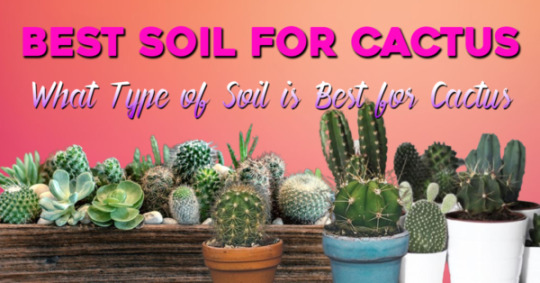
Behind every healthy and balanced cactus lies well-conditioned soil. It is of utmost relevance to select the most effective dirt for cactus because it assists the plant expand well, generate a beautiful blossom, maintain its spiny framework, as well as protect its attractive types.
Cactus as a houseplant generally needs soil that closely resembles its all-natural environment-- the desert.
Therefore, the adhering to details will be your overview in choosing and also producing the very best soil for cactus for them to have a lengthy lifespan:
Best Soil for Cactus: Its Characteristics

Understanding the very best dirt features for cactus is necessary since it will certainly act as your leading guide to choose the perfect dirt and also which type you should not use.
Well-draining
The soil must be well-draining given that it normally grows in an arid setting. This kind of dirt helps eliminate the excess water to ensure that it will not cause root rot.
Pebbly and Sandy
Since it is a desertic plant, therefore, the best dirt for cactus must be pebbly and also sandy in a reasonable amount. Cactus has a tendency to grow well in this type of dirt that dries swiftly. Moreover, pebbles help to improve water drainage that supports the excess water to relocate easily.
Porous
The soil's pores aid maintain the nutrients and retain the sufficient amount of water needed by the origins and the cactus. It is essential to keep in mind that the most effective soil for cactus is also a porous one if you want a heartier plant development.
The Right pH Levels
The soil response's pH indicates the relative acidity (sour) or alkalinity (wonderful) of the soil. Keeping that, the very best soil for cactus should be in the pH series of 5 to 6.
In many cases, it might result in the death of the cactus when the pH of the soil you used is listed below four and also more than the pH range of 7 to 7.5.
One tip for preserving the balance of the soil pH is to utilize rainwater. On the other hand, you can use an industrial test probe or pH examination strips to analyze your dirt mix if it has the appropriate pH.
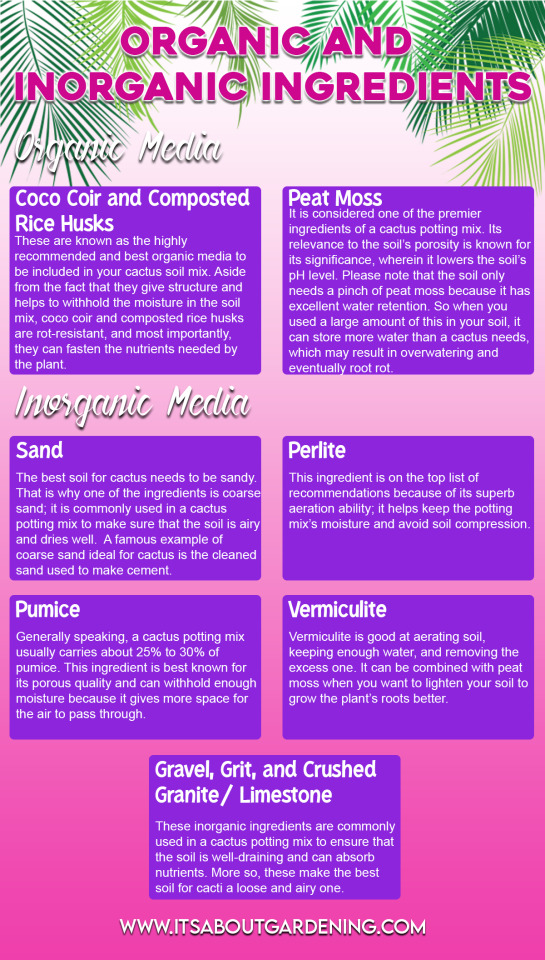
Organic and Inorganic Ingredients
The adhering to are some natural and not natural components in nature that will assist you create the very best soil for cactus.
Organic Media

Coco Coir and also Composted Rice Husks
These are called the highly suggested and also best organic media to be included in your cactus dirt mix.
In addition to the truth that they give structure as well as assists to withhold the moisture in the soil mix, coco coir and composted rice husks are rot-resistant, as well as most notably, they can attach the nutrients required by the plant.
Peat Moss
It is taken into consideration one of the premier ingredients of a cactus potting mix. Its importance to the soil's porosity is understood for its importance, in which it reduces the soil's pH degree.
Please note that the dirt just needs a pinch of peat moss since it has outstanding water retention.
So when you made use of a big quantity of this in your soil, it can keep more water than a cactus requires, which may result in overwatering and at some point origin rot.
2. Inorganic Media
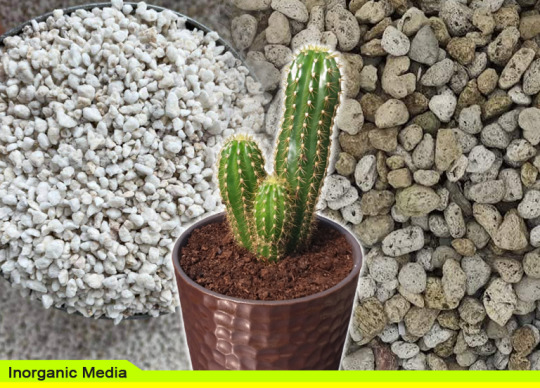
Sand
The most effective soil for cactus needs to be sandy. That is why among the active ingredients is rugged sand; it is generally utilized in a cactus potting mix to make certain that the soil is ventilated and also dries out well.
A well-known instance of rugged sand ideal for cactus is the cleansed sand made use of to make concrete.
Perlite
This active ingredient is on the top checklist of recommendations because of its superb aeration capability; it helps keep the potting mix's moisture and also avoid soil compression.
Pumice
Normally talking, a cactus potting mix generally carries regarding 25% to 30% of pumice. This ingredient is best recognized for its permeable high quality and also can hold back adequate dampness because it provides even more room for the air to go through.
It helps the water run efficiently with the soil, as well as this volcanic rock has trace elements that are beneficial to the plant.
Vermiculite
Vermiculite is proficient at freshening dirt, keeping adequate water, as well as removing the excess one. It can be integrated with peat moss when you intend to lighten your dirt to grow the plant's origins better.
In addition, it is used for much healthier plant growth since it enables the plants to absorb potassium, calcium, ammonium, and magnesium.
Gravel, Grit, and Crushed Granite/ Limestone
These inorganic components are frequently made use of in a cactus potting mix to make sure that the soil is well-draining and also can take in nutrients.
A lot more so, these make the most effective soil for cacti a loose and also ventilated one.
What if you want to use of a Commercial soil mix?

If you do not have adequate time to create a cactus potting mix, an additional choice is to purchase business cactus potting soil, but it is vital to ensure that it is the most effective soil for your cacti.
Constantly bear in mind the following when picking a business potting dirt for your cactus:
Please note that advertised potting soil is not that sufficient for your indoor cactus plant. A remedy for this is to integrate it with pumice or various other organic/ not natural media to accomplish the soil's appropriate porosity and also enhance its mineral content.
Pick the cactus potting mix that is a well-draining one and has outstanding water-storing high quality to keep the soil's dampness.
Reminder in making your cactus soil mix
It would be a great deal less costly when you make your cactus potting mix, but it does require initiative as well as time. There is no solitary recipe for a cactus potting mix, the one required by a desert cactus varies from what dirt mix is required by a forest cactus.
You must stay clear of utilizing manure in your dirt mix because it tends to produce a fungi that can hurt the cactus's roots.
For plants, water has the very same value as dirt. Choosing the very best dirt for cactus assists the plant to thrive best. That is why the tips stated above will certainly be helpful for you as a plant fanatic.
Always make certain to select the soil potting mix suitable for your cactus for a heartier growth rich in nutrients, well-draining, permeable, pebbly, sandy, with the right pH level, and also utilizes natural or inorganic media.
0 notes
Text
CACTUS | Its About Gardening | itsaboutgardening.com

Cactus - Do you want to own an unique, decorative, as well as distinctive plant in your house, workplace, or yard? Or possibly you are looking for a low-maintenance as well as undemanding plant that additionally bears stunning and also dynamic flowers?

After that a cactus is a best plant that you can add to your collection!
A cactus is a flowering plant household with around 2,000 types and also 139 general. This plant is belonging to North as well as South America as well as usually found in warm and also dry locations and adapted to live in the intense heat and also desert atmosphere.
Cactus: Overview

Cactus is a succulent perennial plant. They have usually thick flesh-filled stems that contain chlorophyll. They can distinguish it from various other cacti plants via their dark bumps or areoles in their body, hair or hair (trichomes), spines, or barbed bristles.
Cactus varies dramatically in size as well as basic look. Here are the different categories of cactus according to their growth and also formation:
Arborescent Cacti. These are tree-like cacti that commonly have at the very least one main trunk with numerous branches and also sub-branches.
Columnar Cacti. These are smaller selections of cacti. They are contain straight shape of cylinder tube stems, with or without branches, and have no clear division in the trunk and also branches.
Globular Cacti. These cactus have stems that are reasonably smaller compare to various other categories. They have reduced, more rounded arm or legs than the columnar cacti. Globular cacti may be particular, while others may develop clusters on their stems that create huge piles. Some branches in a selection may share a typical root.
Other Forms. Various other cacti have an entirely different look. Some grow as forest climbers as well as in some exotic areas. Their stems are generally level like a leaf, with fewer or even no backs. Epiphytic cacti typically expand downwards, developing globs in trees where they prosper.
Flowers

Cacti are all blooming plants; nonetheless, some have a lot more noticeable blossoms, and there are a few that will blossom rather quickly with vivid and vivid display screens.
Cacti bloom on new growth, so it may hardly ever bloom if your plant sits there throughout the years. It would certainly be best if you permit the cacti to follow its common development period. It ought to be inactive in winter and also awaken in spring, so it is far better to put it somewhere dry and also chilly-- but not dark-- over winter and avoid sprinkling completely. Offer it with lots of sunlight as long as possible and also start to water it throughout spring.
How to take care of cactus?
As we all understand, cactus prosper in hot and also completely dry environments; however, they can also flourish in a house environment where they fit as a home design design.
Here are some treatment suggestions to maintain your cactus healthy and balanced and pleased:
Find a perfect location. Cactus is typically from deserts; consequently, they like the sunlight. Positioning them where they can get sufficient sunshine is exceptional. Nonetheless, cactus can also obtain sunburned if they received sunshine throughout the day. Overexposure to the sunlight may create your cactus to turn yellow or brownish. Morning or filtered sunshine is outstanding.
Please provide the correct amount of water. There are some issues when it pertains to watering our cacti. Some farmers state that we should not provide too much water to our cacti because they are from the desert. Yet the fact is that they require regular watering's like the other plants; they have a distinct capability to survive dry spell. Nonetheless, please have a look and make certain that the soil is dry prior to sprinkling it again.
Choose the ideal pots. When repotting your cactus, have a look at your pots or container. See to it has drain holes to avoid stationary water at the bottom part. Soaking your dirt in water can create rot on your cactus origins and also at some point to its body.
Choose the right soil. It would certainly be best if you grew cactus in a well-draining and also coarse tool. You can make use of three parts of regular potting dirt, three components coarse sand/poultry grit/gravel, as well as two parts perlite or pumice. This mixture is exceptional for your cactus since it permits air to distribute, preventing your soil from obtaining saturated with water.
Give food to your cacti. Cacti likewise need to be fertilized every when. Throughout the summertime growth months, you can provide fertilizers along with every watering.
Cactus Propagation

There are different ways to make your cactus collection several and propagate even more. Who doesn't want to have a substantial collection of cactus, right? Cactus can be propagated through the procedure of division, reducing, seed expanding, as well as grafting.
Division: It is one of the most comfortable type of proliferation. You can use this process when your cactus plant starts crowding on its container. You can do it by dividing a part of a body (normally the baby cactus) from the mother plant. However, you require to utilize gloves if the cactus to be divide has some irritable spines to stay clear of injury.
Cuttings: This may be the fastest way of propagating cacti. This process includes reducing the body or stem of the cactus plant after that replanting it once more in a separate container. Nevertheless, you need to make certain that you utilize a sterilized knife to prevent rot on the cactus plant. Also, it is necessary to air-dry the cut part before replanting it once again.
Seed Growing: Cacti may sprout just a couple of ovules each time. Place the origins in a well-drained mix and water them regularly, stopping the plants from drying out. Seeds will not sprout up until dampness has pas through the tough seed layer.
Grafting: This breeding method is excellent for cacti varieties that can not grow individually, such as the moon cactus. Below are the various types of grafts:
Flat grafts: Both heir (the upper part) and also stock (the area with the roots) have the very same diameters.
Cleft grafts: Placing a smaller sized scion right into an aperture made in the supply.
Side graft: reducing diagonally on the supply as well as heir.
In grafting cactus, you can make use of an elastic band or tape to keep the cacti pieces together.
#CACTUS | Its About Gardening#Different categories of Cactus#Cactus Flowers#How to Care Cactus#Cactus Propagation
0 notes
Text
DIFFERENT TYPES OF CACTUS PLANT AND SPECIES

DIFFERENT TYPES OF CACTUS PLANT: Did you understand that having cacti in your home or workplace will make your day effective, relaxed, as well as somehow rewarding?
Cactus plants are terrific plants to have around for added peace, relaxation, and intensive healing issues. Besides their distinct figure, these are likewise low-maintenance and also can entirely live without taking way too much care of them.
To assist you find the perfect types of cactus with unique look and how to care for the plant to put in your home or office, these are the different kinds of cacti you might choose from:
Moon Cactus (Gymnocalycium Mihanovichii).

Among one of the most popular cacti kinds for home gardens is that the Moon Cactus can be rapidly identified due to its vibrant neon orange, yellow, purple, red, or pink lollipop-like shapes that sit atop a rootstock.
The moon cactus plants can not produce chlorophyll. They need a rootstock that creates such pigment in which they can be implanted for them to flourish well. They can likewise be grown inside your home if offered with enough light.
Moon cacti are categorized as small cactus plants. They can expand just up to 0.5 inches in size. Nevertheless, some growers can grow up to 8 inches in diameter.
Bunny Ear Cactus (Opuntia Microdasys).

The bunny ears cactus plants can also be called angel's wings as well as are recognized for their thick pad-like stems that resemble a rabbit's ears.
The bunny ears can be conveniently expanded in a completely dry, low moisture residence with lots of sunlight direct exposure. It is originated in Mexico and also is generally in arid, desert-like areas.
Rabbit ears can grow up to 2 to 3 feet or 61-91 cm tall with a spread of 4 to 5 feet in their indigenous environment. However, it is a slow-growing plant that will likely get to 2 feet in height as well as have regarding the very same size when placed on house.
Old Lady Cactus (Mammillaria Hahniana)

The Mammillaria Hahniana, also called the Old woman Cactus, is a prominent cactus that enjoys the sun and is very simple to grow, either outside or interior. It gets a lot of sunshine.
The old lady cacti, which is belonging to Mexico, genuinely grows in a hot and also completely dry setting. Prevent placing this plant in shaded locations to stay clear of rot.
This cacti is gorgeous with its single spherical stems and can create blossoms in colors of red-purple. It can grow up to around 4 inches high and 8 inches broad.
Star Cactus (Astrophytum Asterias).

The Star Cactus is a spineless cactus with a thick round body looking like a sand buck. Star cacti plants are rather pleasing to the eyes as well as really simple to expand, making them ideal as a garden screen.
It can be placed inside as long as it gets sufficient light from the sun. It is very simple to expand as well as flawlessly grows in disregard. Nonetheless, the body will certainly squash out as well as transform brownish if it remains in dire requirement of water; as a result, sprinkling them periodically benefits this plant.
The Celebrity cactus' body can only mature to 2-6 inches throughout with jagged sides. It has eight sections with great white hairs. It can also flower 3-inch flowers in yellow hues with orange facilities. The flowers will transform berry-like with gray, pink, or red shade covered in wooly hair.
Easter Cactus (Hatiora Gaertneri).

The Easter Cactus, additionally called Holiday Cactus, is a popular cacti plant that forms appealing blossoms in tones of pink, white, and red. It is named after the holiday which they display their blossoms.
The Easter cactus plants are belonging to the southeastern tropical forests of Brazil. This plant has tubular-shaped blossoms as well as segmented leaf-like stems with sharp serrated sides. It is often described as crab cactus since it partially looks like the crab's legs.
This cacti plant can grow up to 12 inches high and also approximately 24 inches in size.
Fairy Castle Cactus (Acanthocereus tetragonus 'Fairy Castle').

The Fairy Castle Cactus is a mini columnar sort of cactus belonging to The United States and Canada that grows multiple eco-friendly branches that clump with each other up and down, forming like turrets of a fairy castle.
This cacti plant is extremely easy to expand, which makes it excellent for newbies. Each of its stems has 5 sides with short white spines. It expands well both inside your home as well as outdoors or as long as it gets enough sunshine.
The Fairy castle cacti can mature to 6 feet high and proactively grows in springtime as well as loss.
Golden Barrel Cactus (Echinocactus Grusonii).

The Golden Barrel cactus is a slow-growing cacti plant with a pale eco-friendly, barrel-shaped stem with noticeable ribs decorated with areoles sprouting intense golden spines. It flowers in intense yellow tones. They are indigenous in the southwestern U.S. and also Mexico.
The gold barrel cacti are slow-growing and also can tolerate low light, making them an optimal choice for inside. However, they are initially planted outdoors or in the wild, making them grow up to 130 centimeters in elevation and approximately 90 centimeters in width.
Prevent its body from getting wet while in sunshine as it might trigger sun burning, fungal infections, or even rot. The Golden barrel cacti are fantastic for desert gardens, rock gardens, and also attractive containers also.
Prickly Pear Cactus (Opuntia).

The Prickly Pear Cactus typically called nopal, or paddle cactus is recognized for its vast, flat, branching pads. These sorts of cacti are typically located in cozy, dry environments. Nonetheless, some ranges expand in chilly locations, such as the Eastern prickly pear.
Prickly Pear cacti like alkaline to neutral soil. Nonetheless, the soil needs to be well-draining as residual dampness can trigger the plant to rot.
The pads as well as blossoms of many selections of prickly pear cacti are edible after careful cleaning. The edible prickly pear pads are typically called nopales, while the fruit is called tuna fruit.
Do you understand that prickly pear cactus are also used for medicine? Yes, you read that right! They are generally utilized in creating medicines for kind 2 diabetes mellitus, high cholesterol, weight problems, alcohol hangover, colitis, diarrhea, benign prostatic hypertrophy (BPH), and it is additionally utilized in combating viral infections.
Here’s are the Types of Cactus with unique looks and how to take care of them.
Cactus plants are a terrific addition to your garden. They are low maintenance plants that are easy to take care of as well as don't require to be sprinkled on a regular basis. It is completely excellent as an accent to your yard, home, or office.
#DIFFERENT TYPES OF CACTUS PLANT:#Moon Cactus Bunny Ear Cactus Old Lady Cactus Star Cactus Golden barrel Cactus Easter Cactus Fairy Castle Cactus Prikly Pear Cactus
0 notes